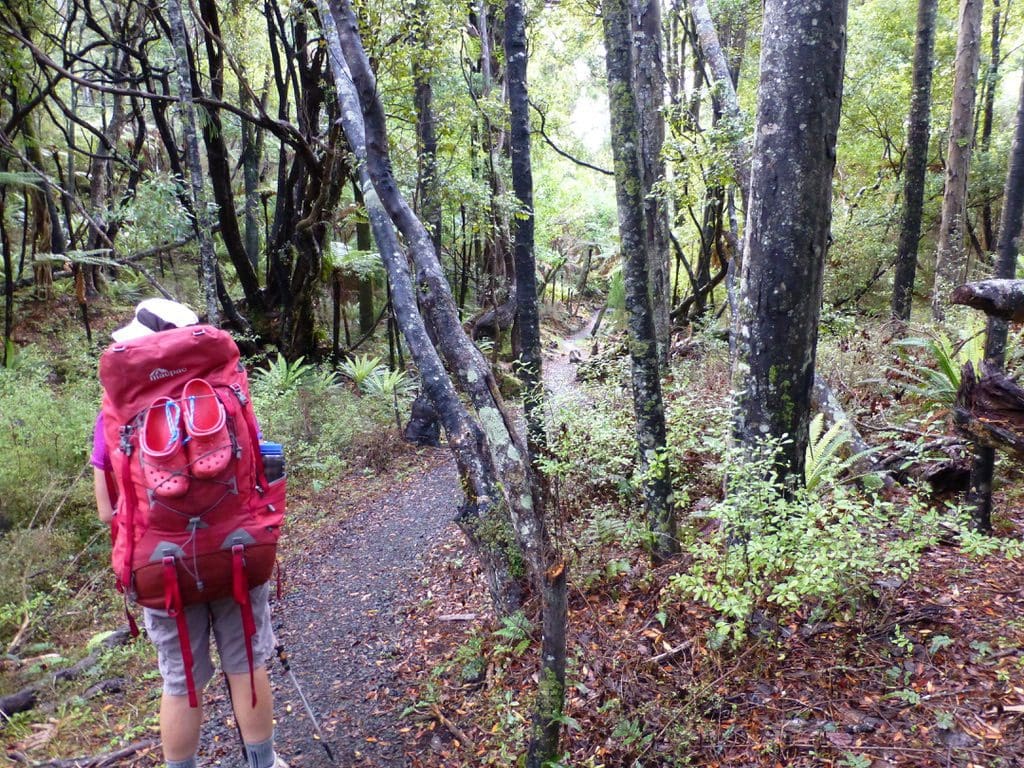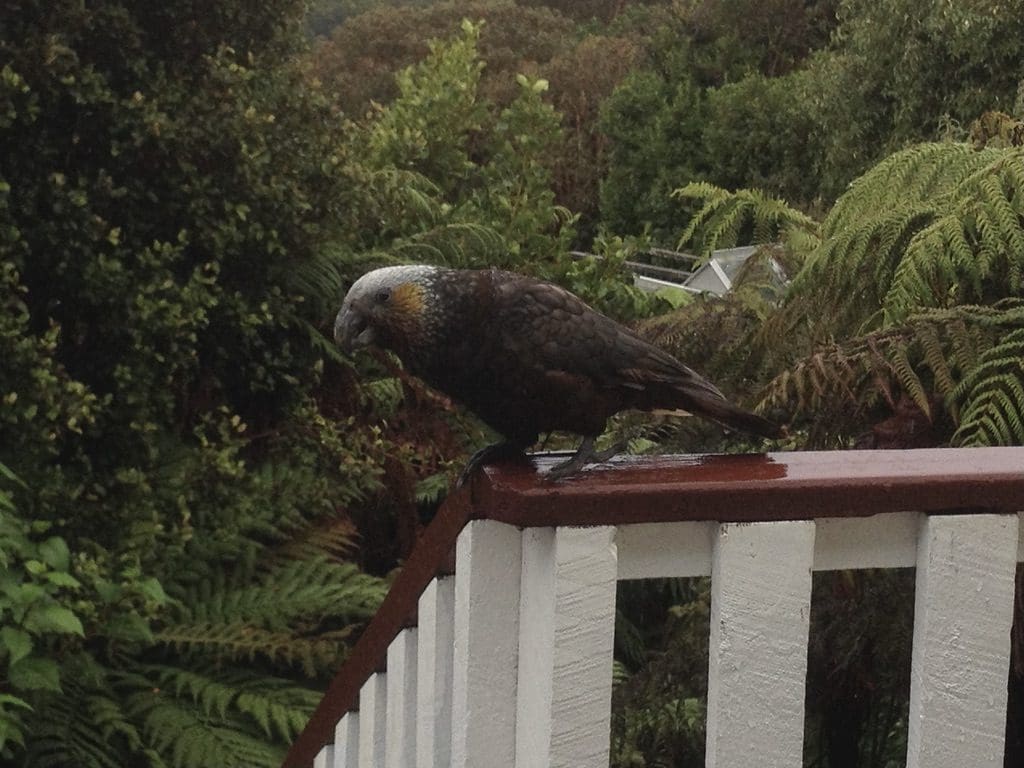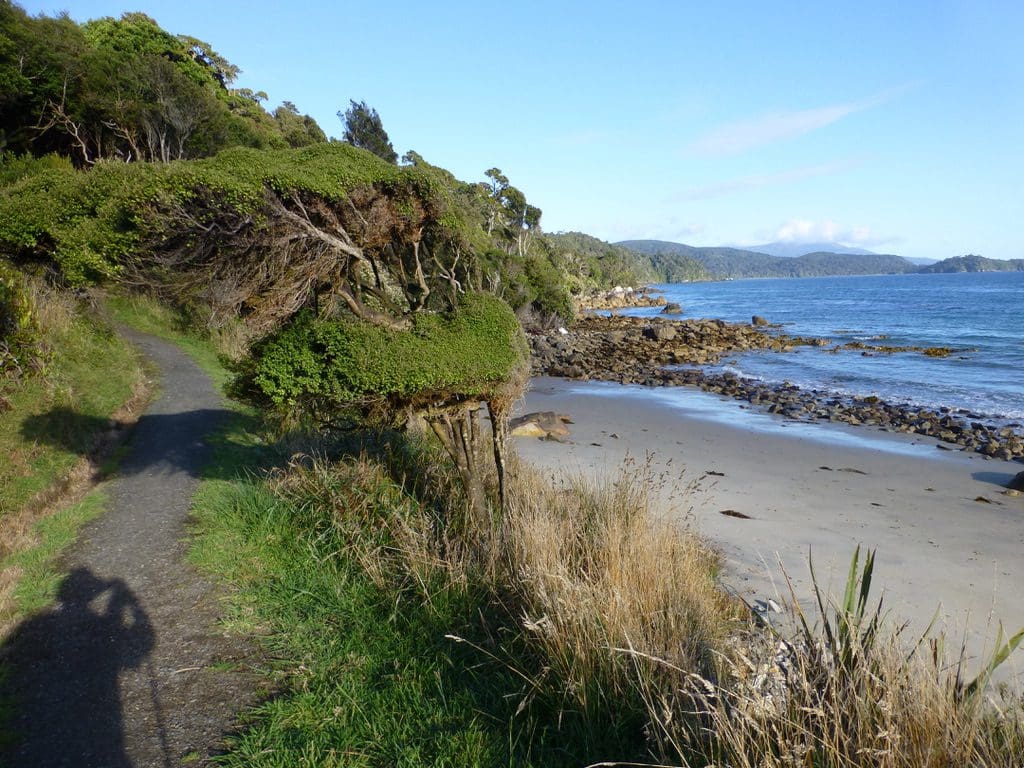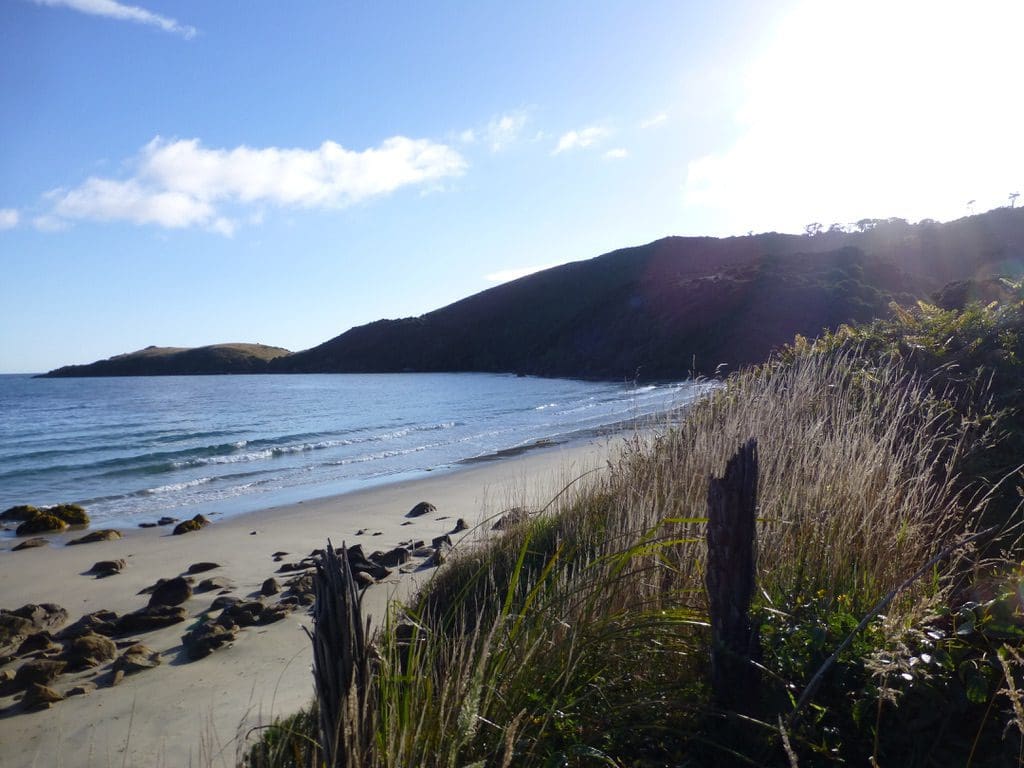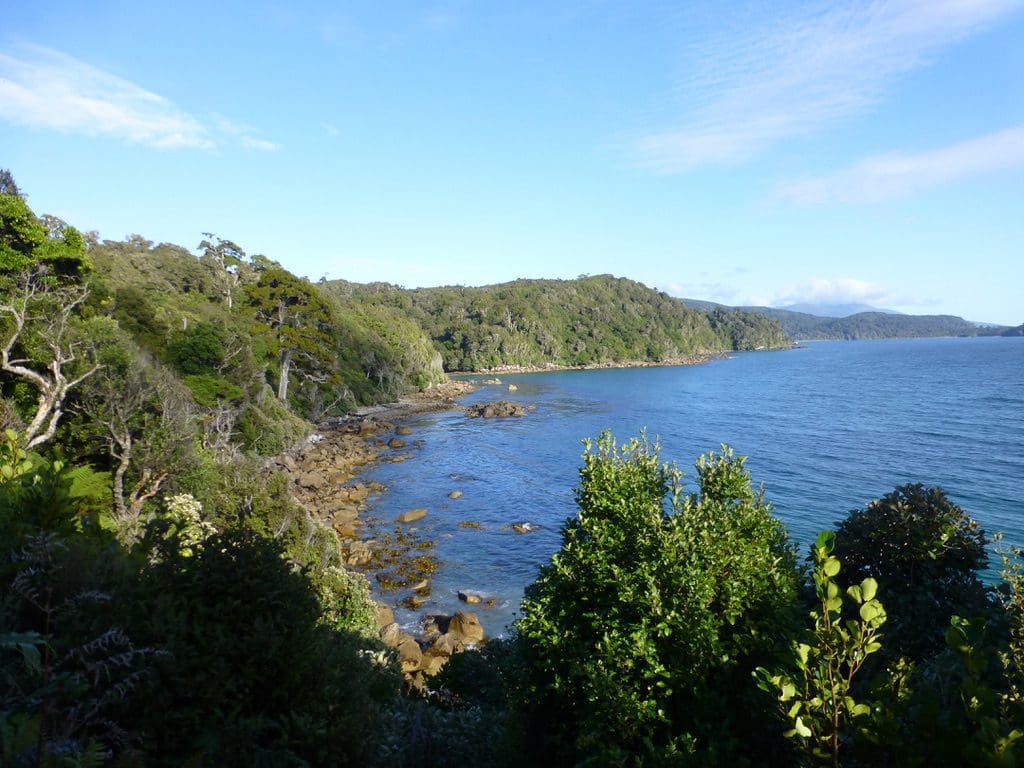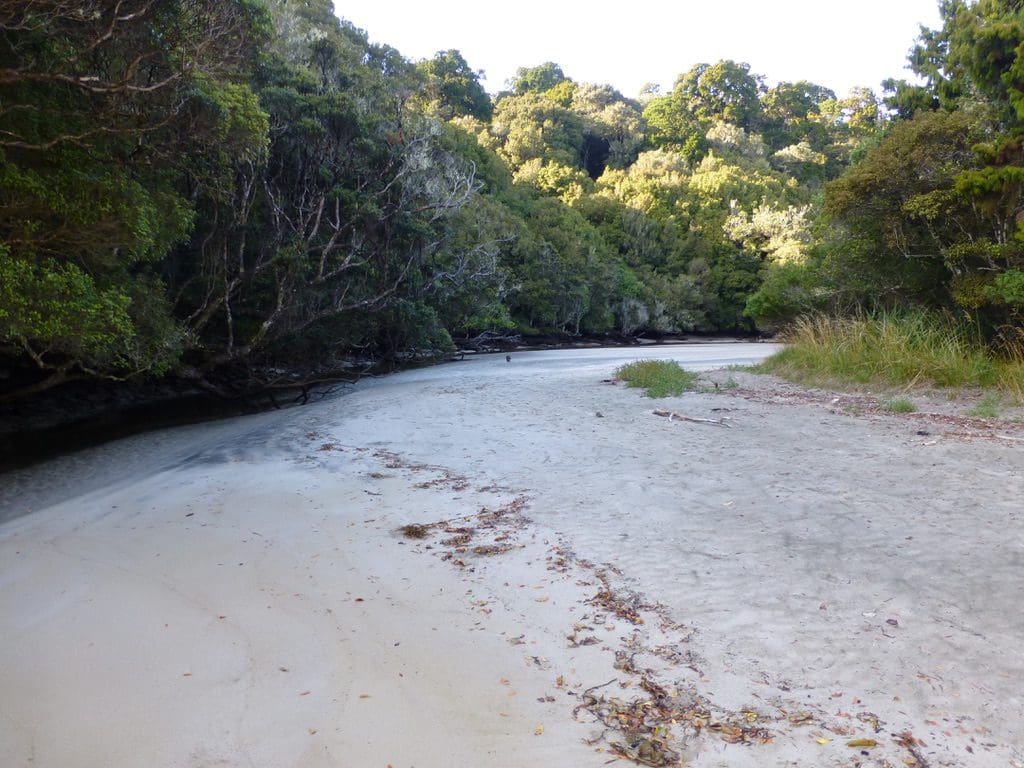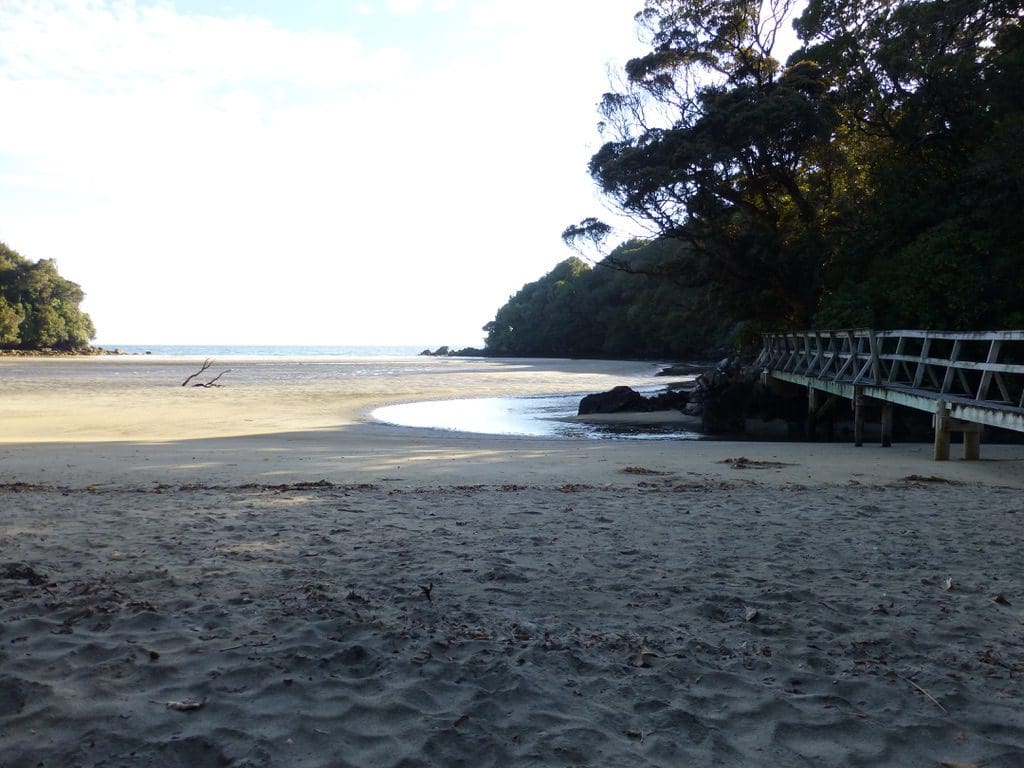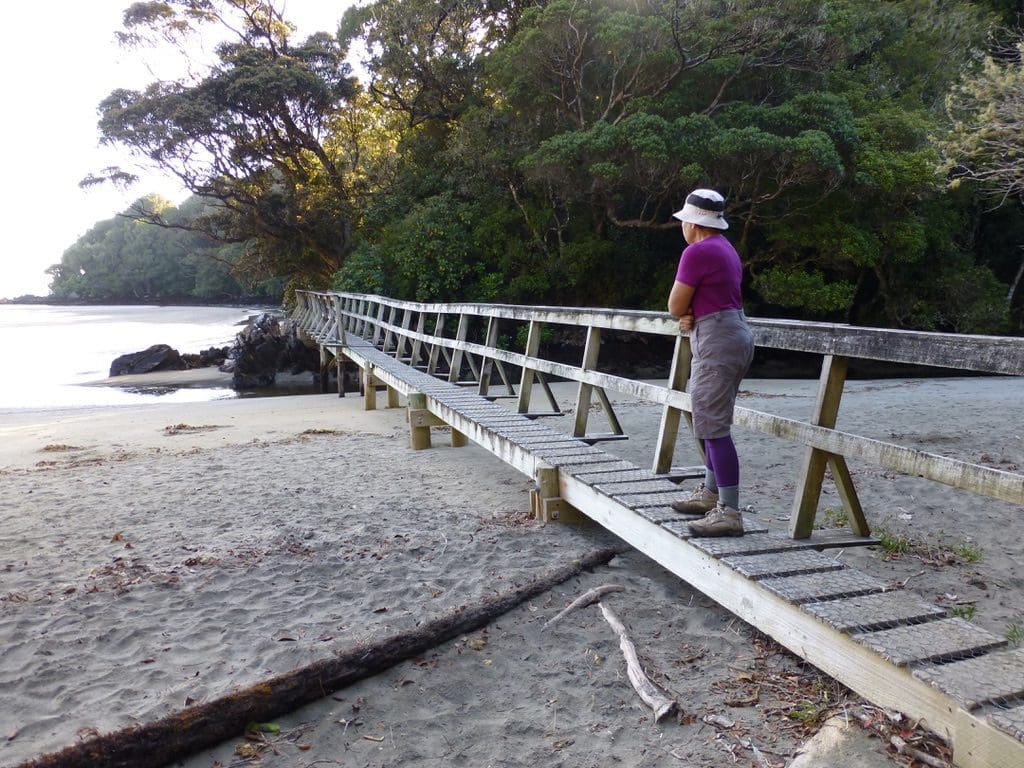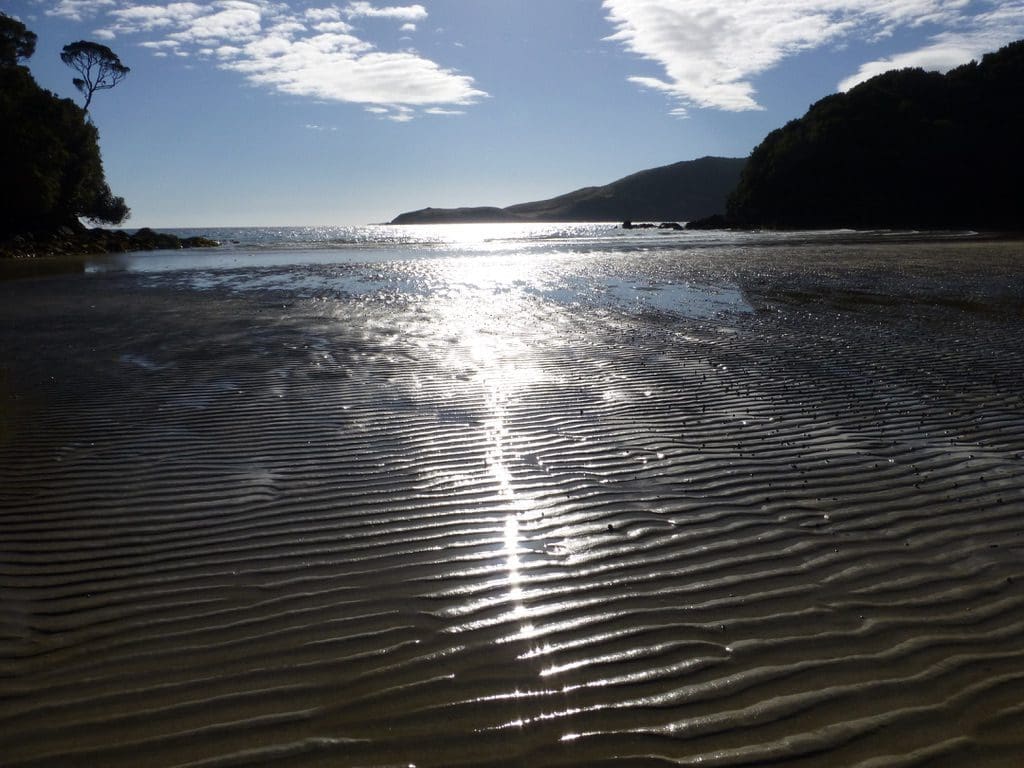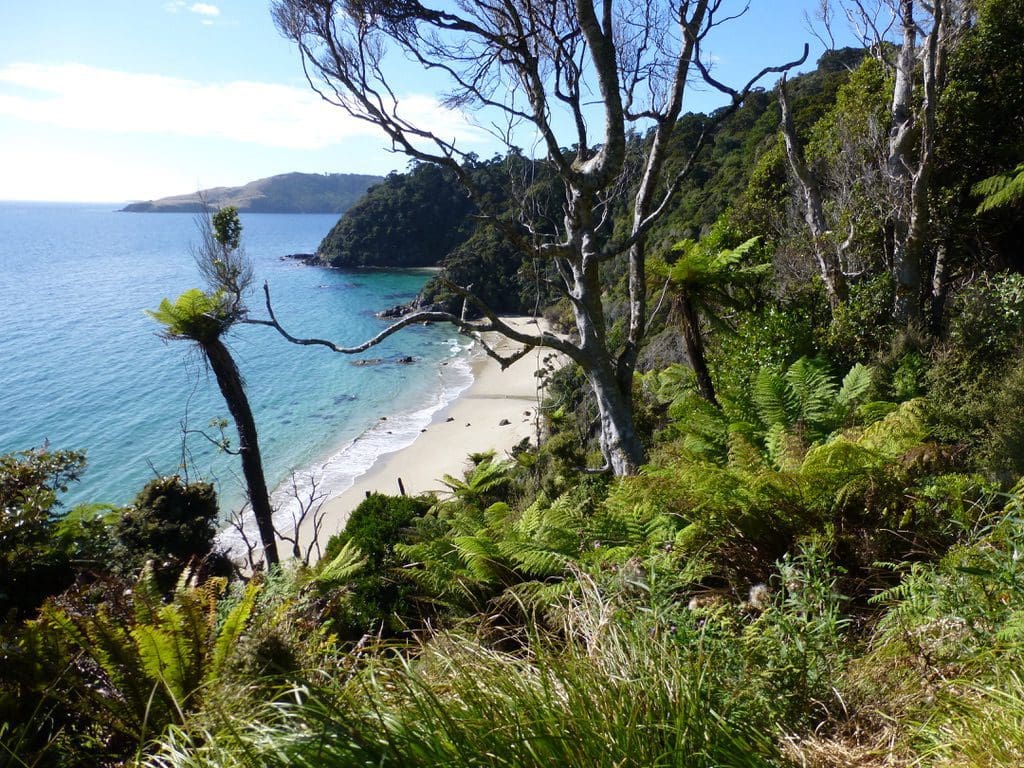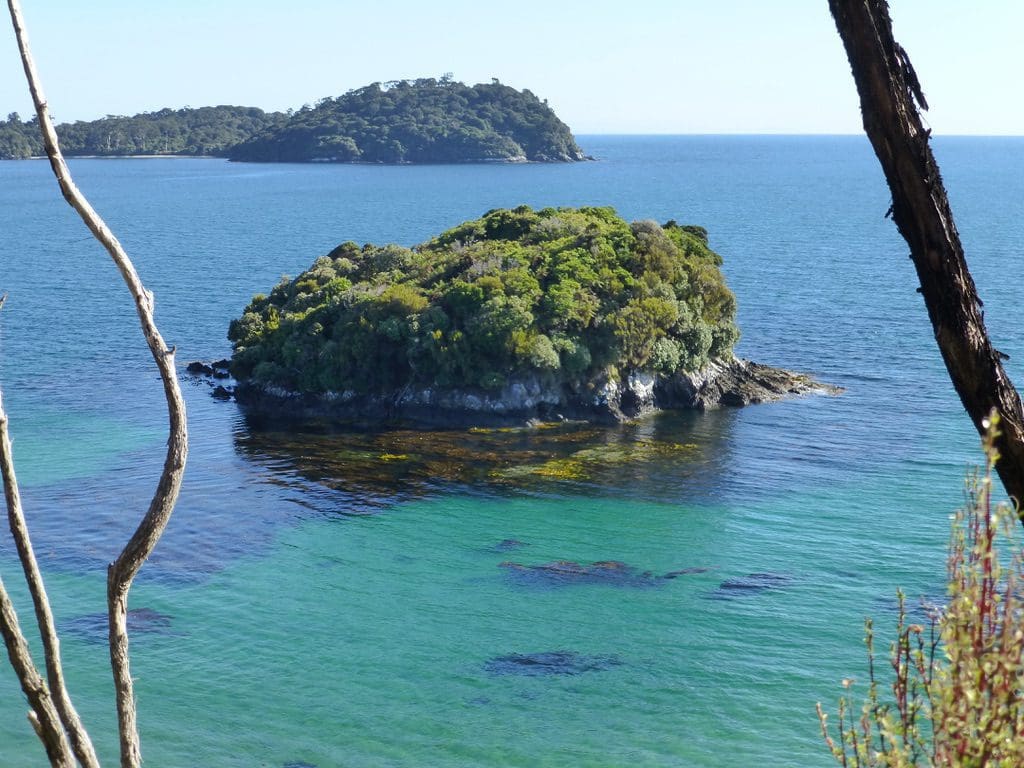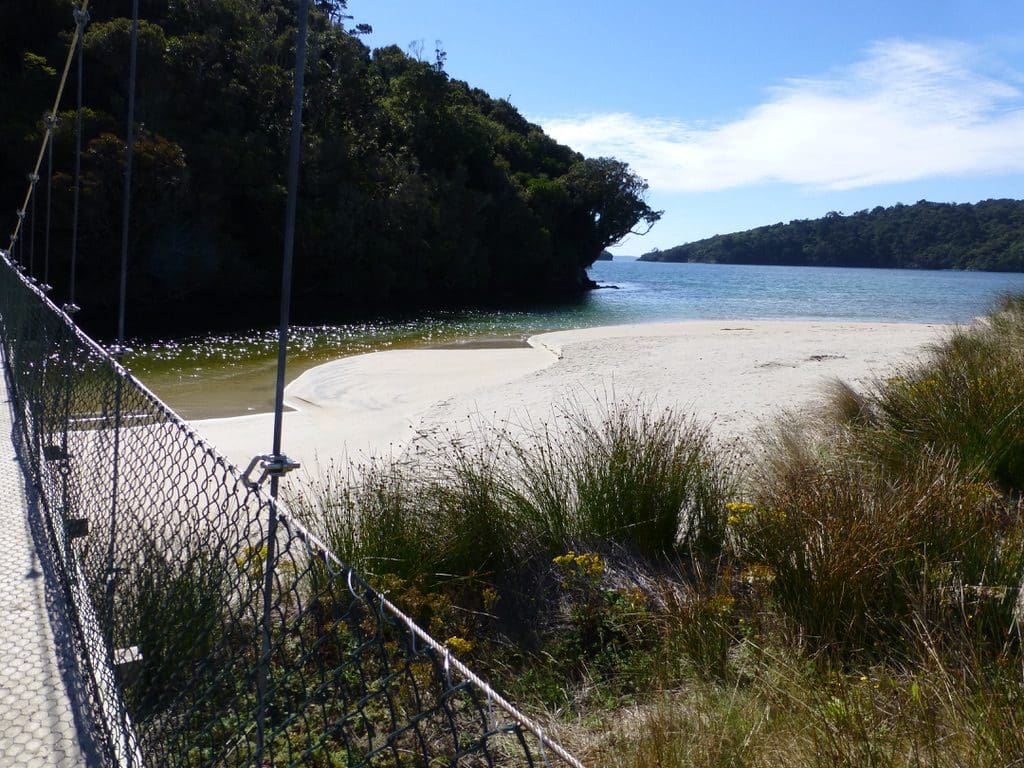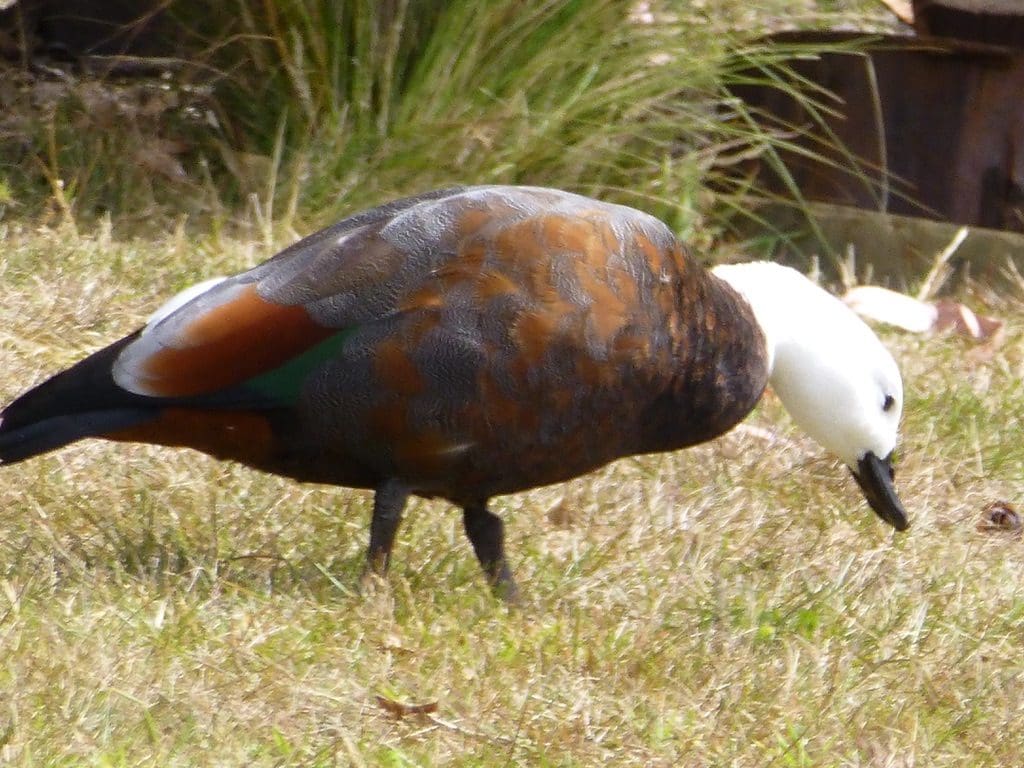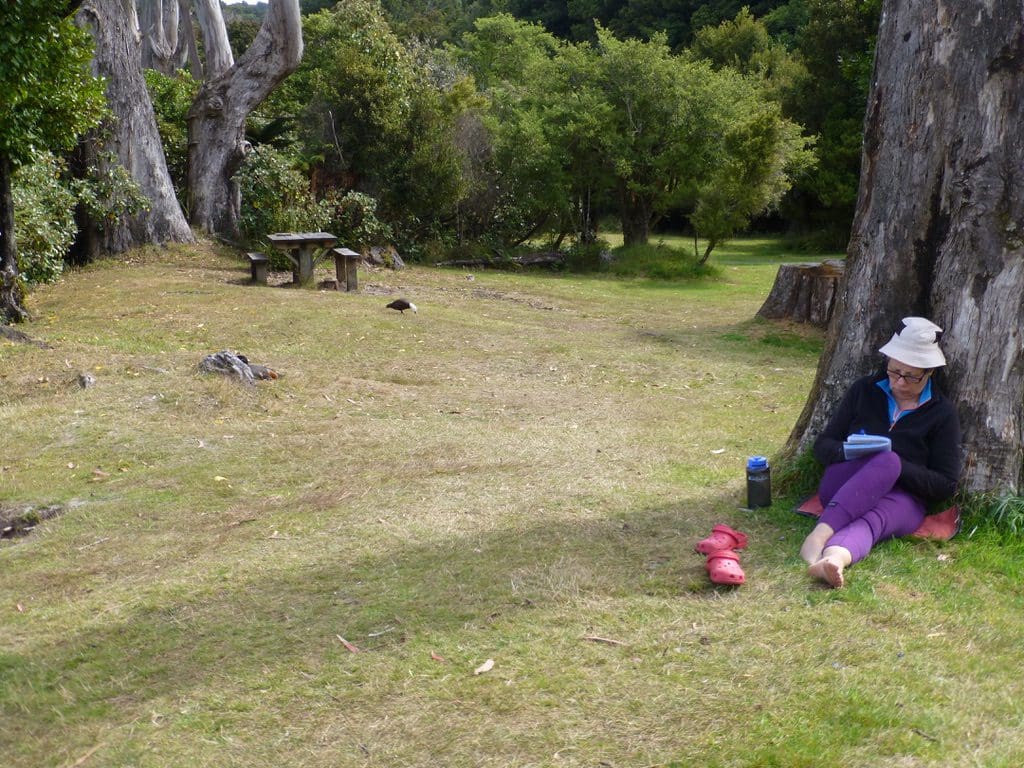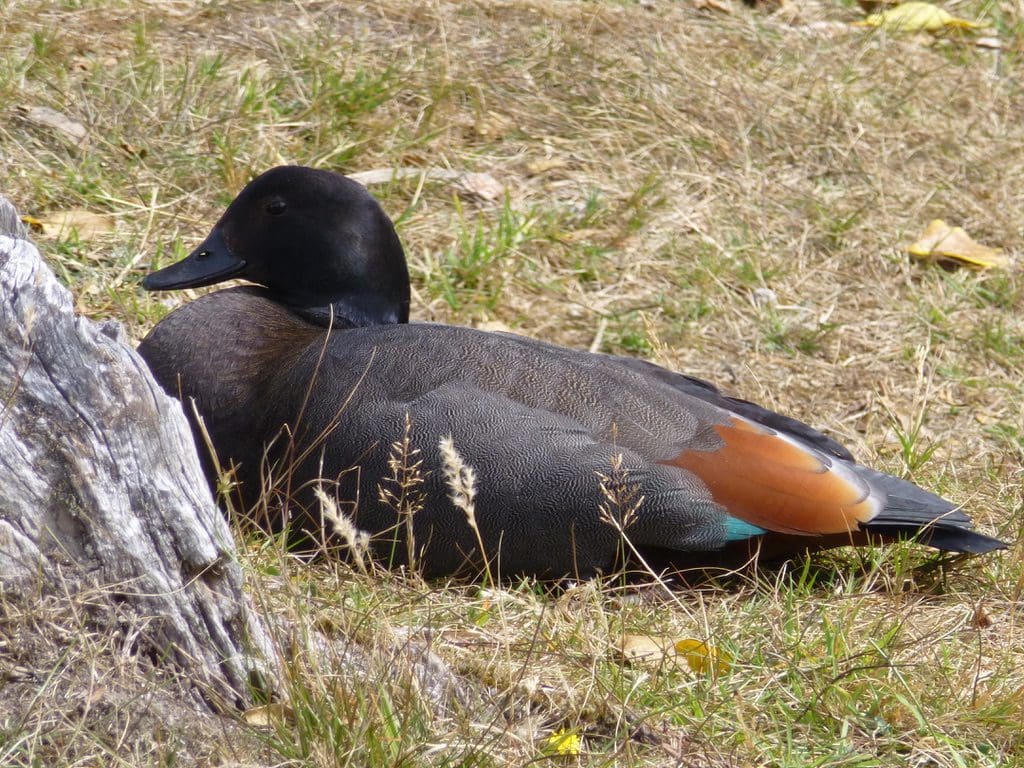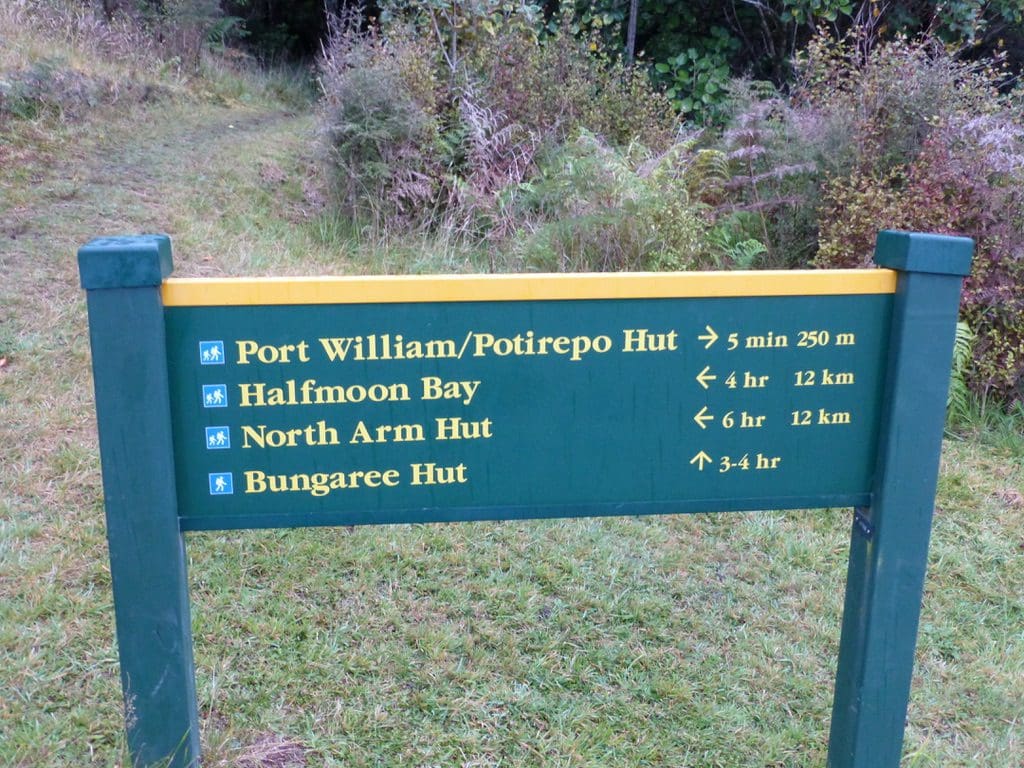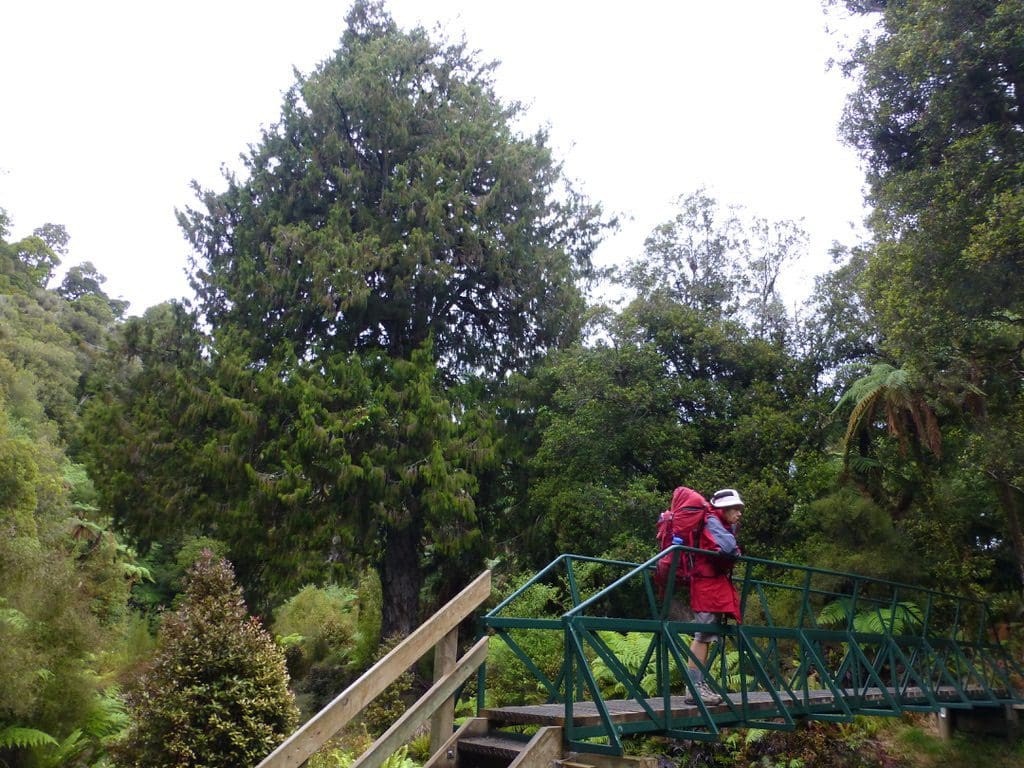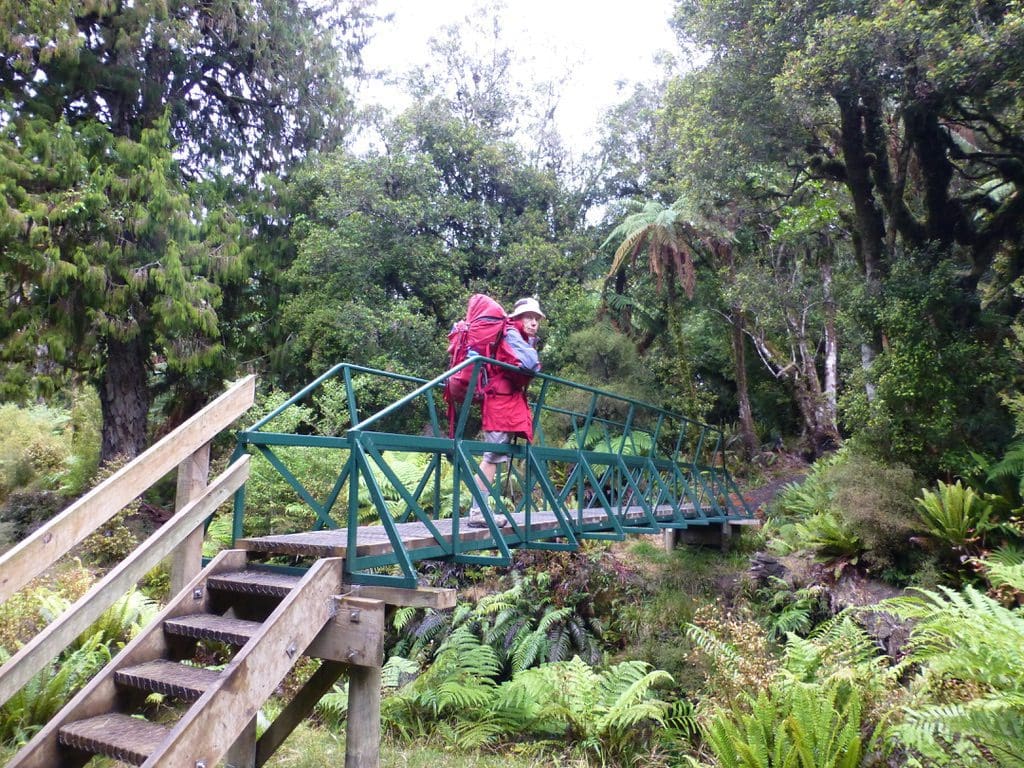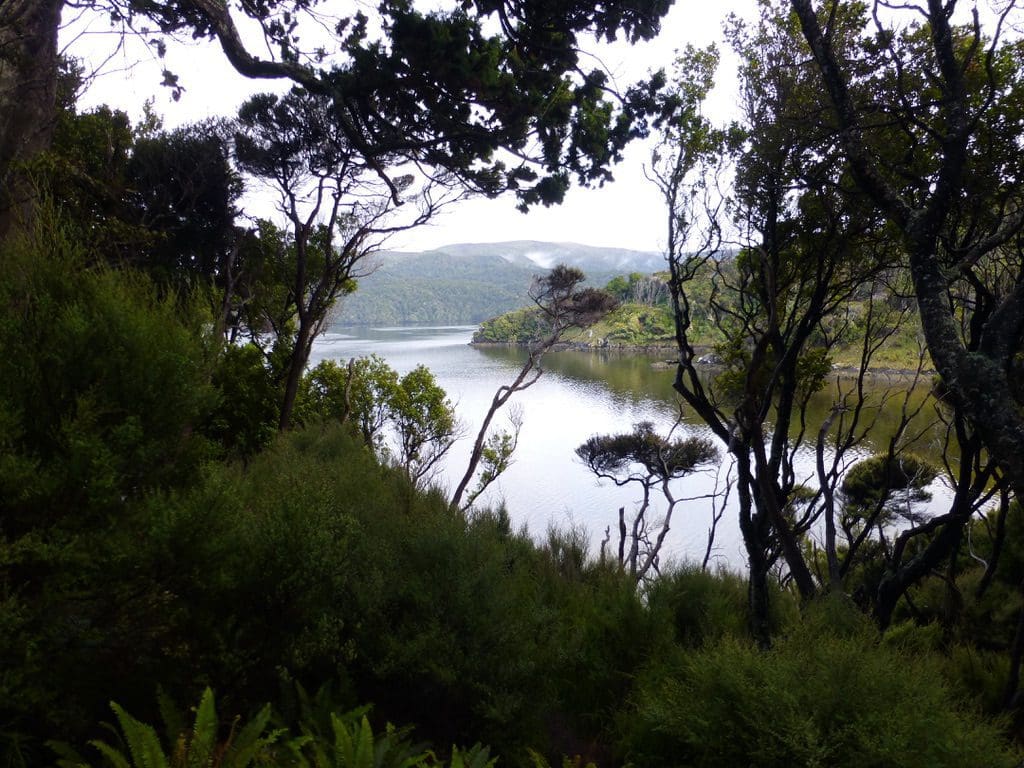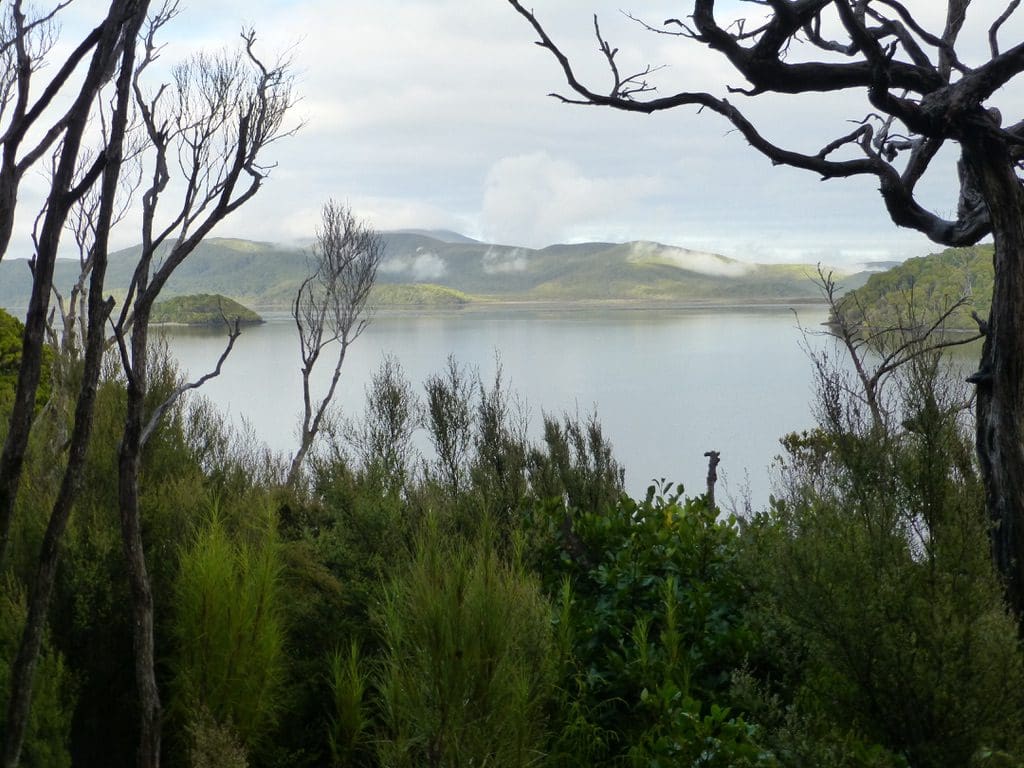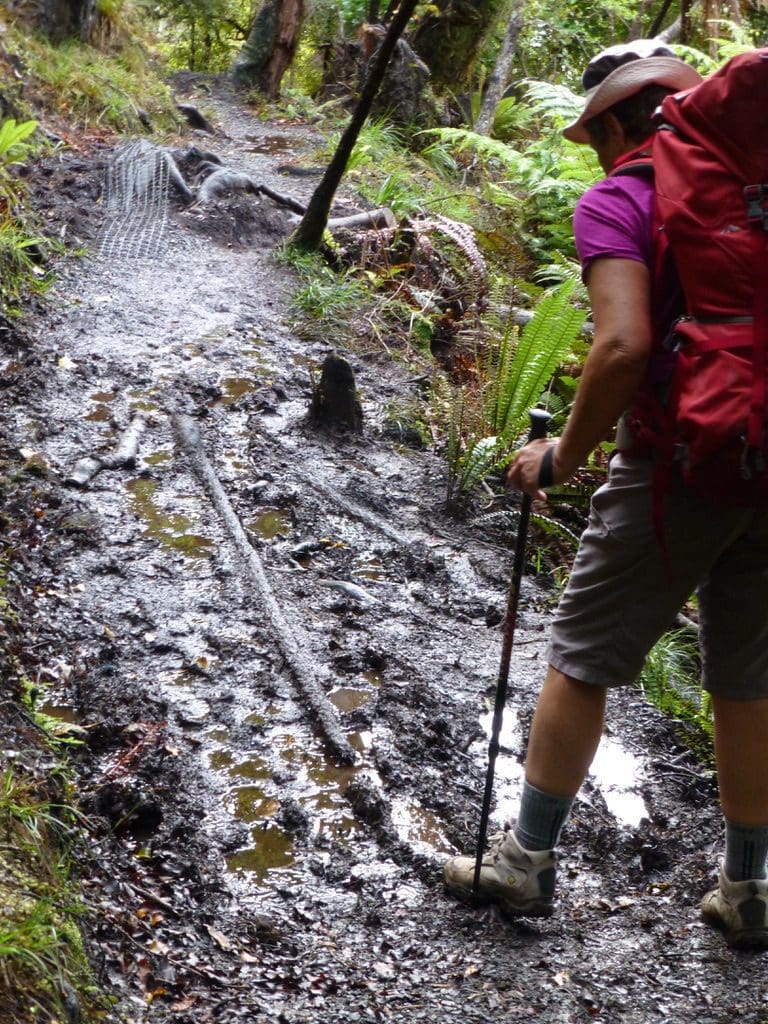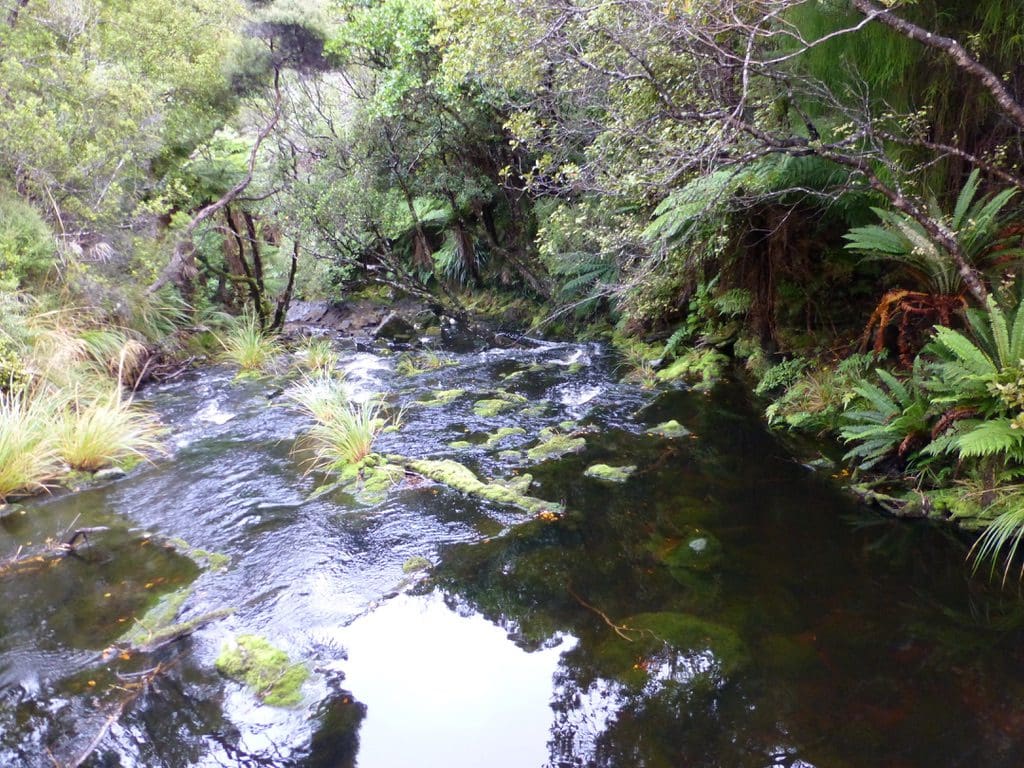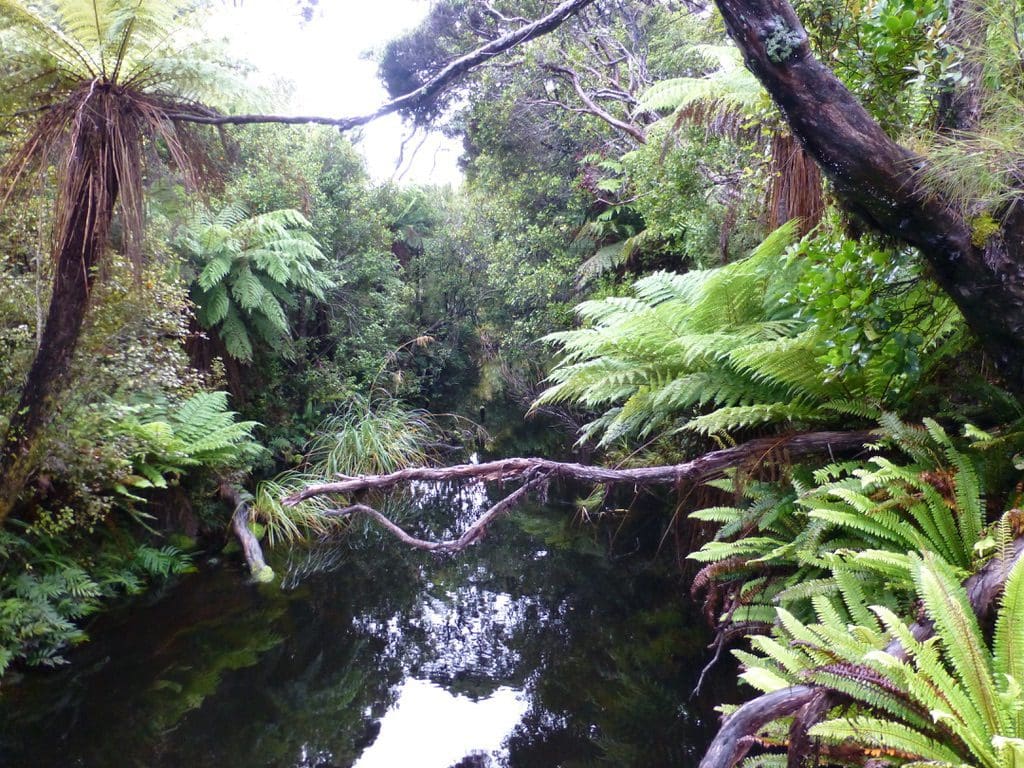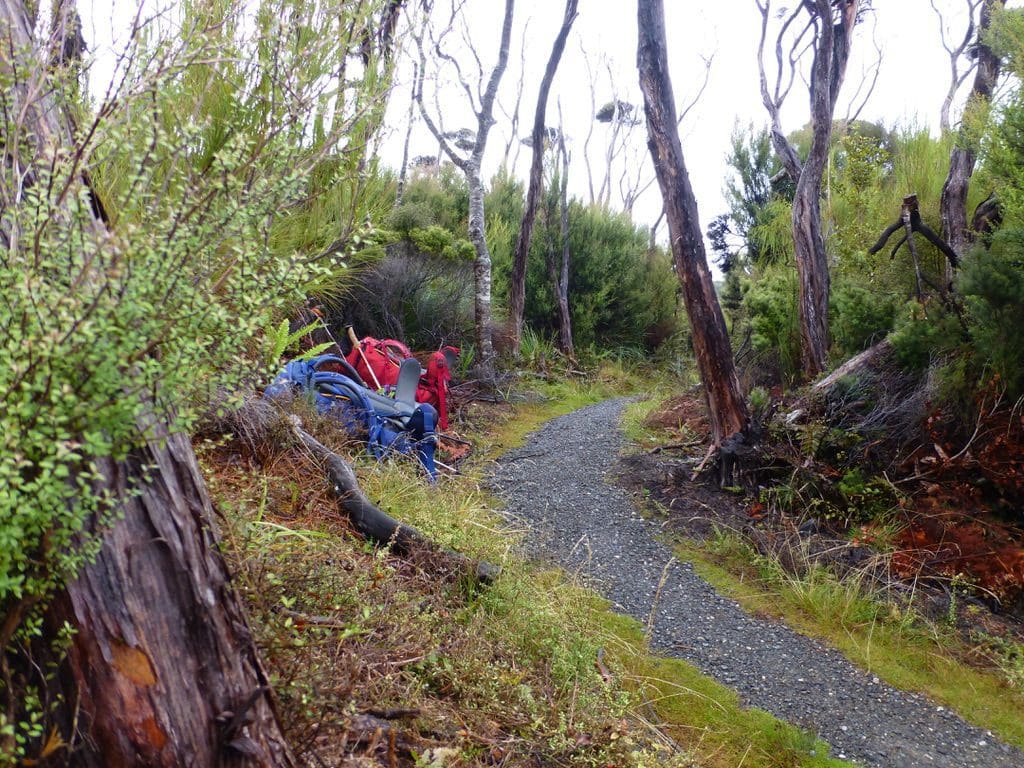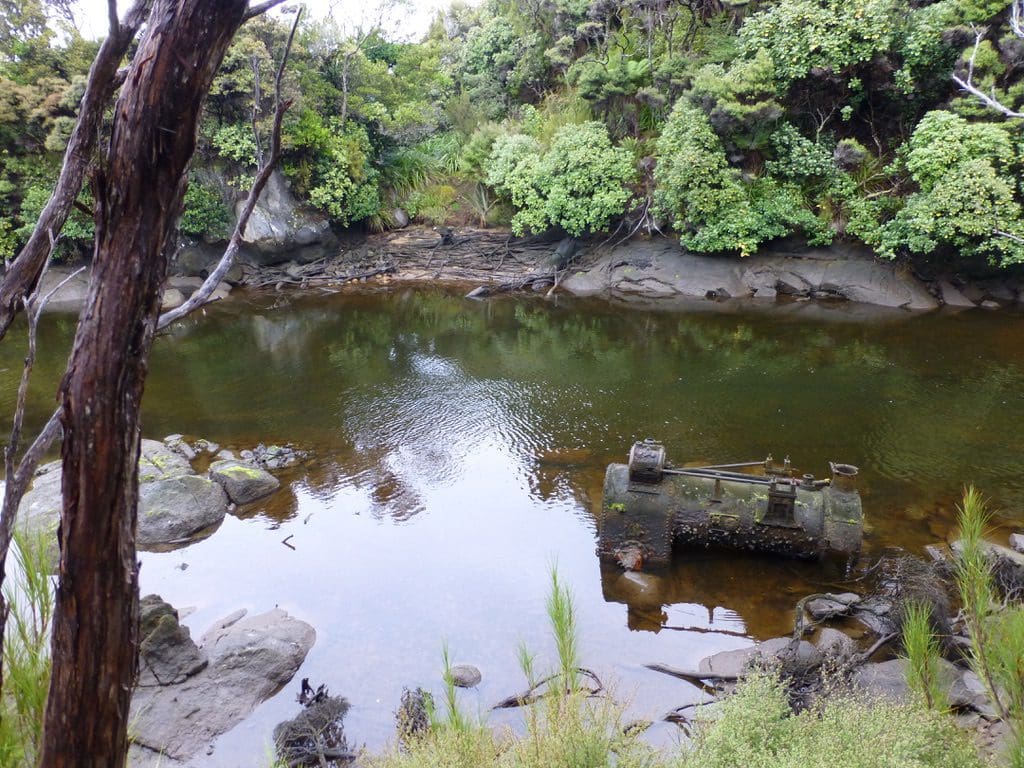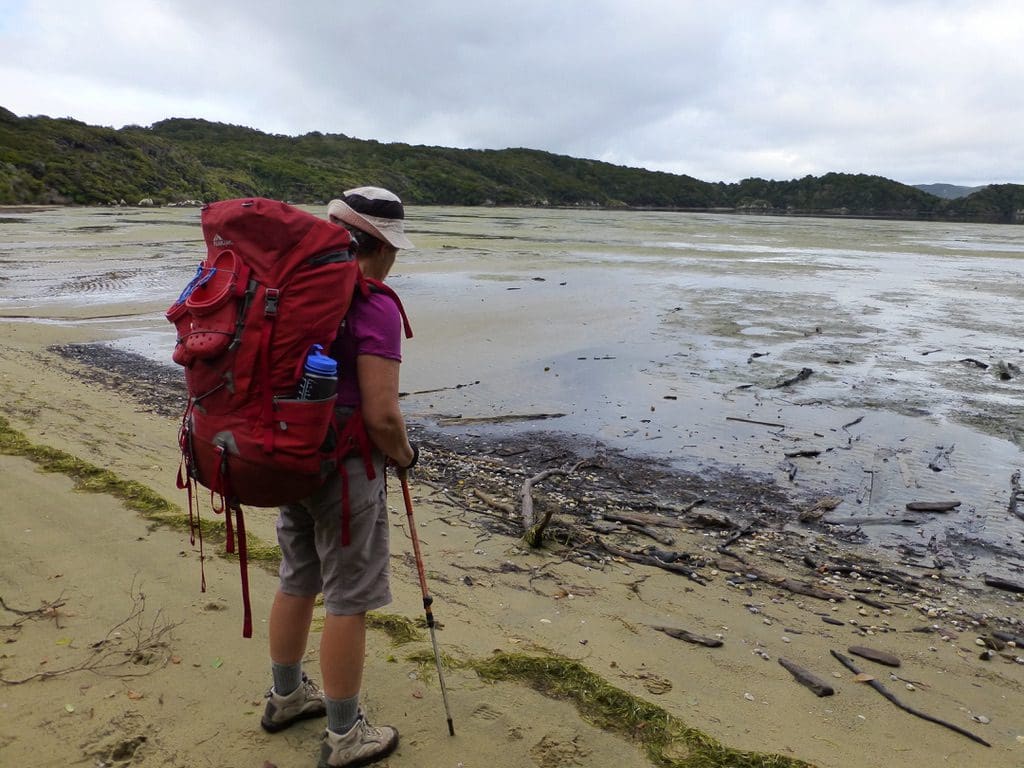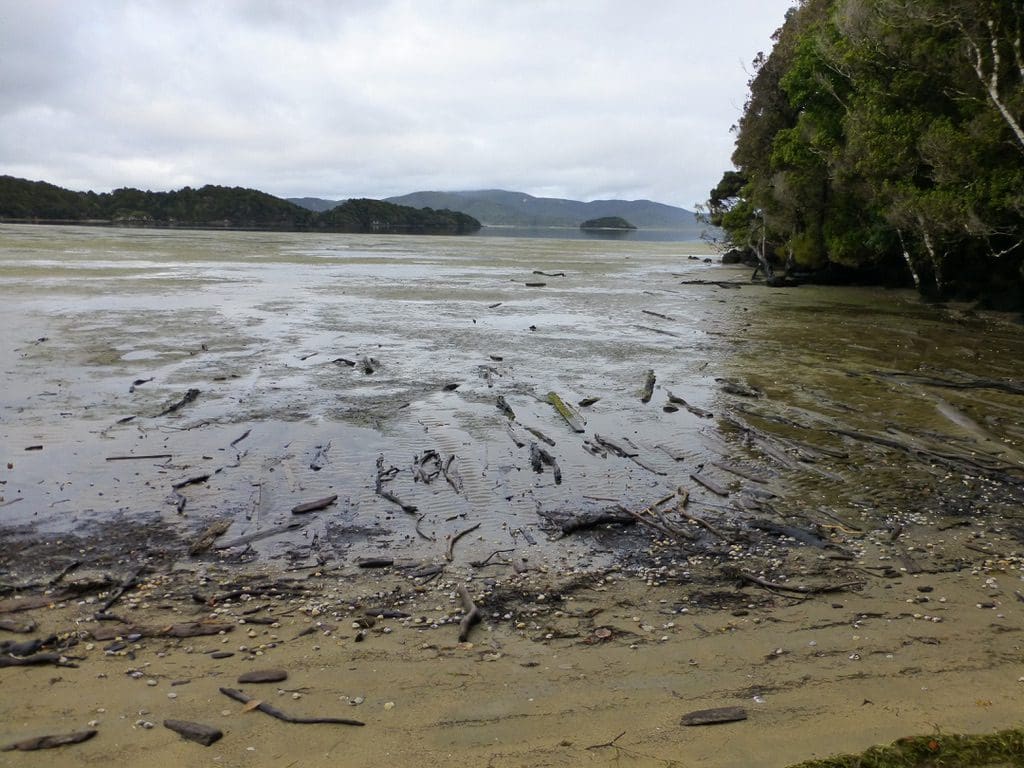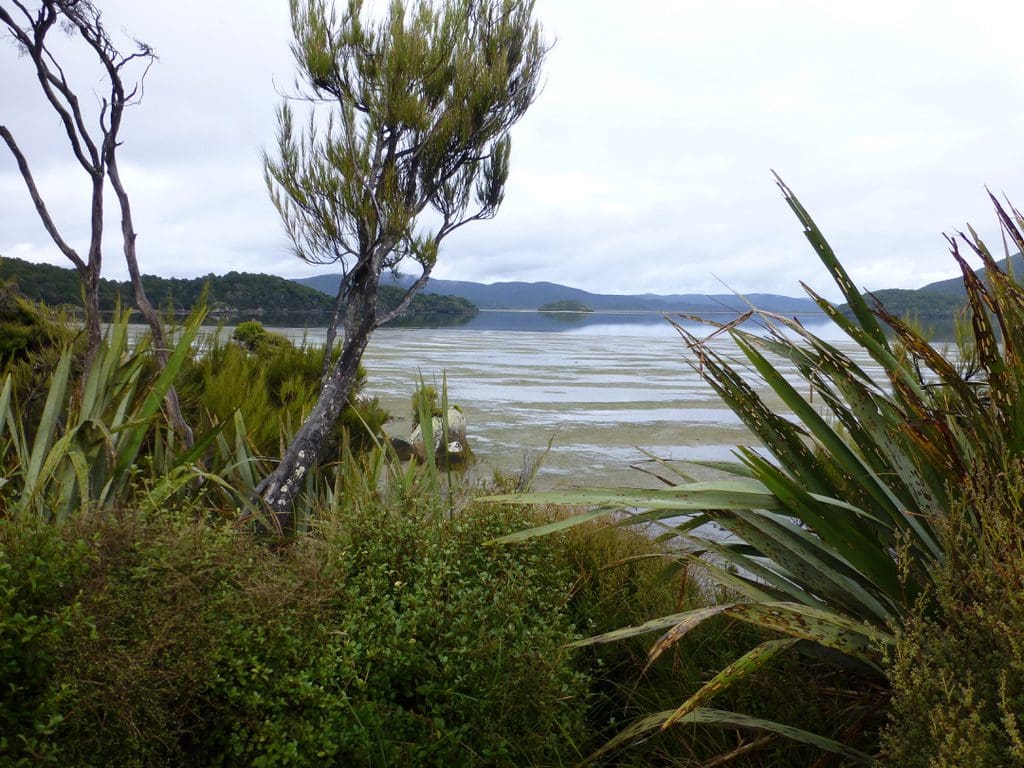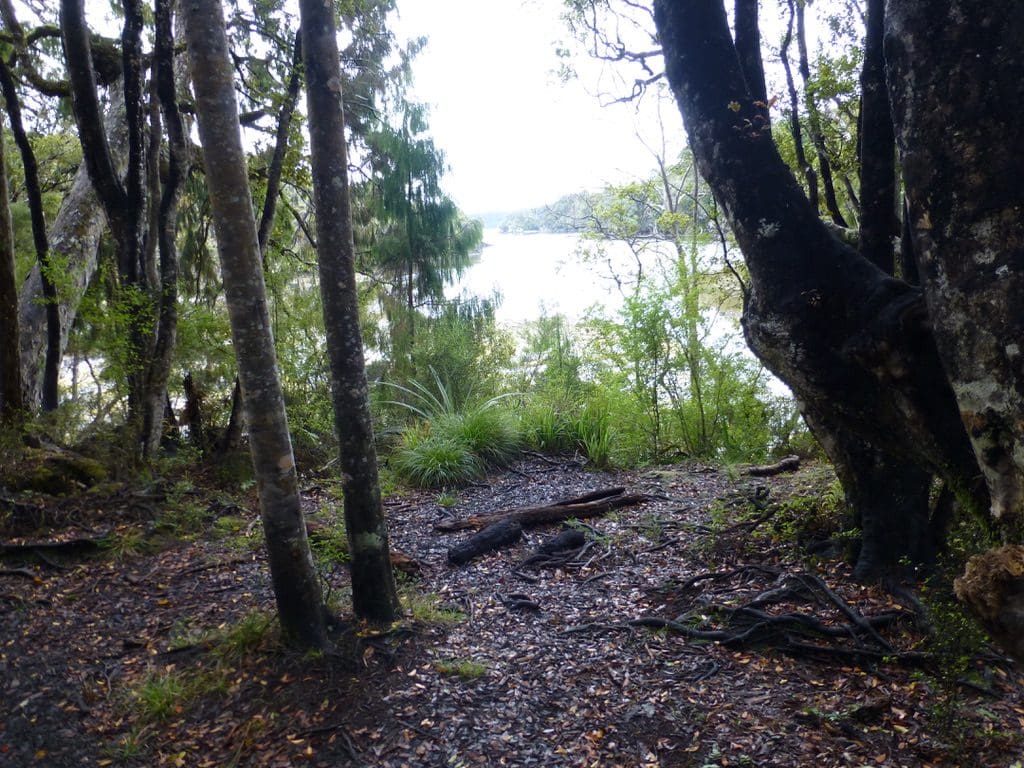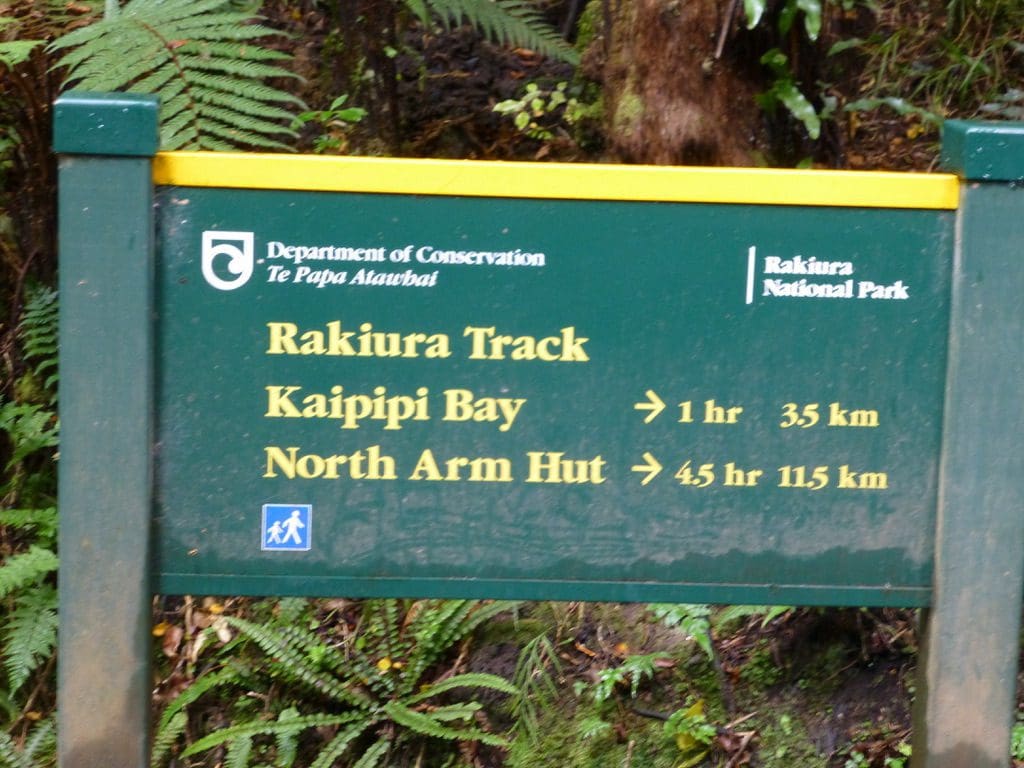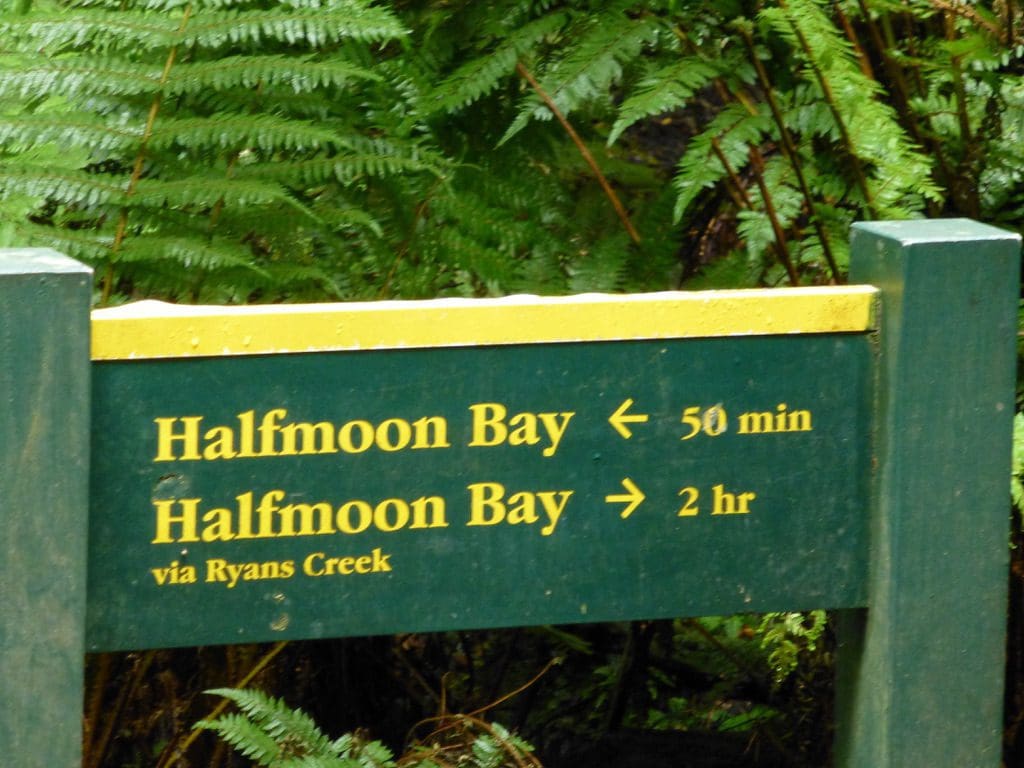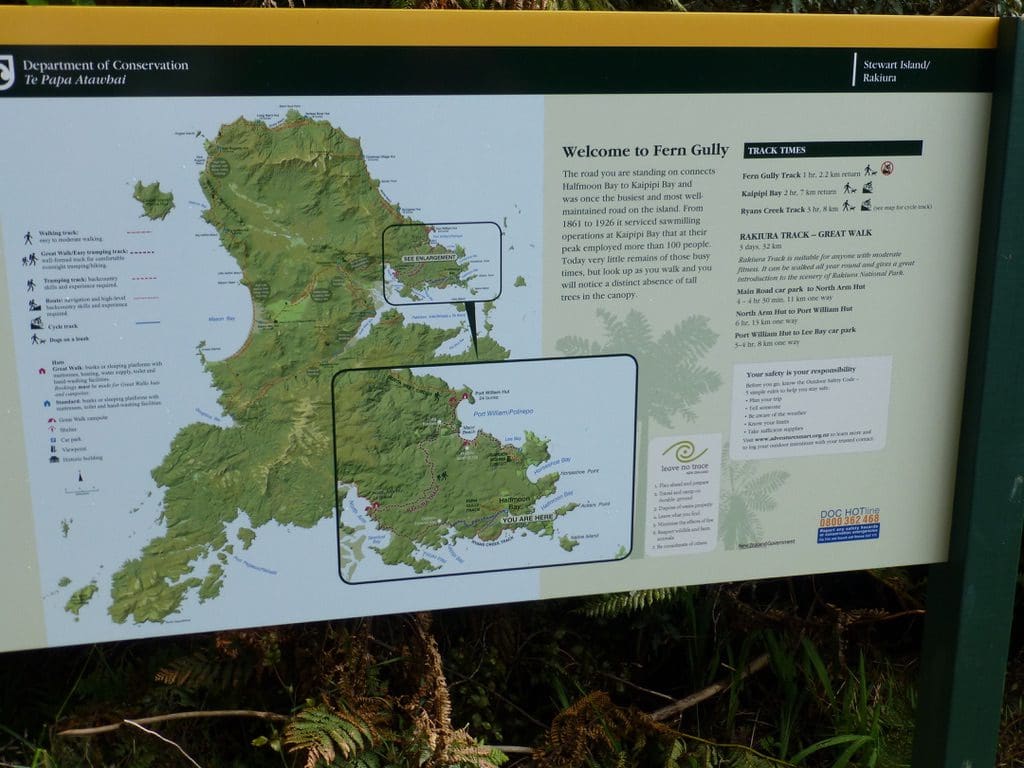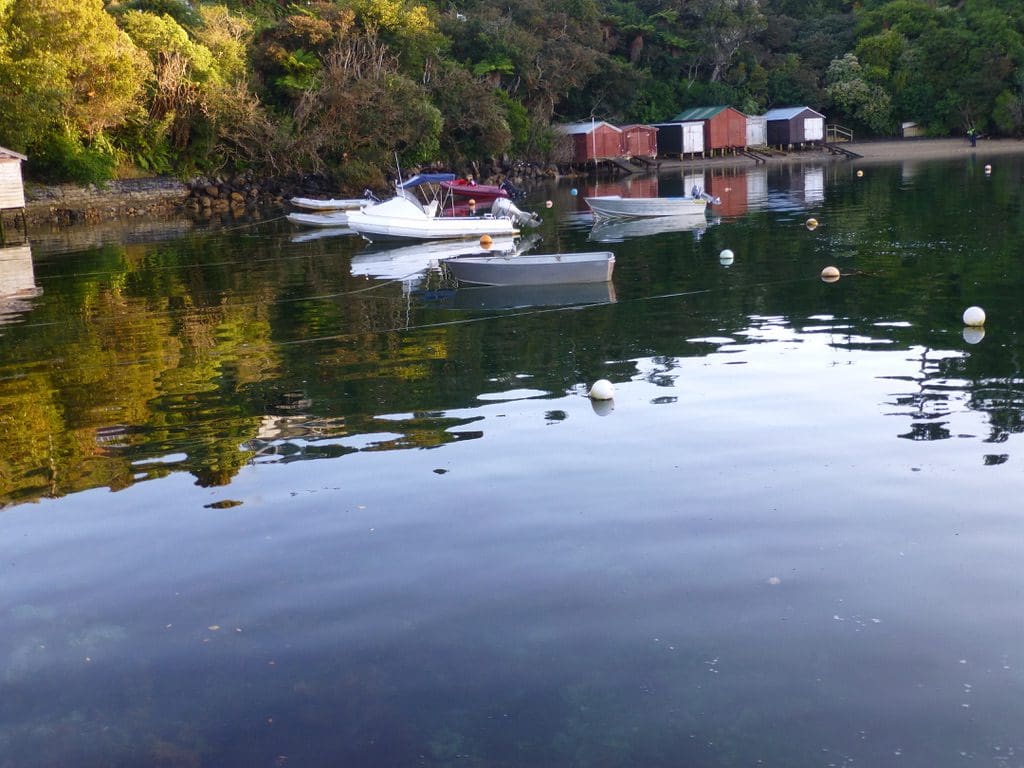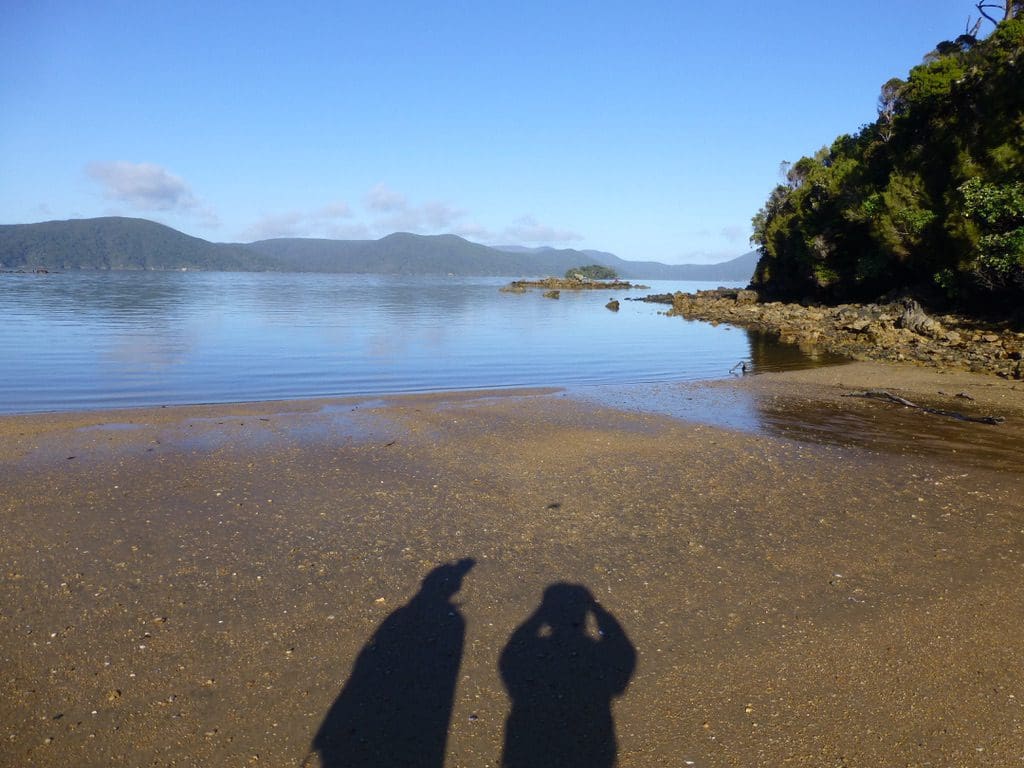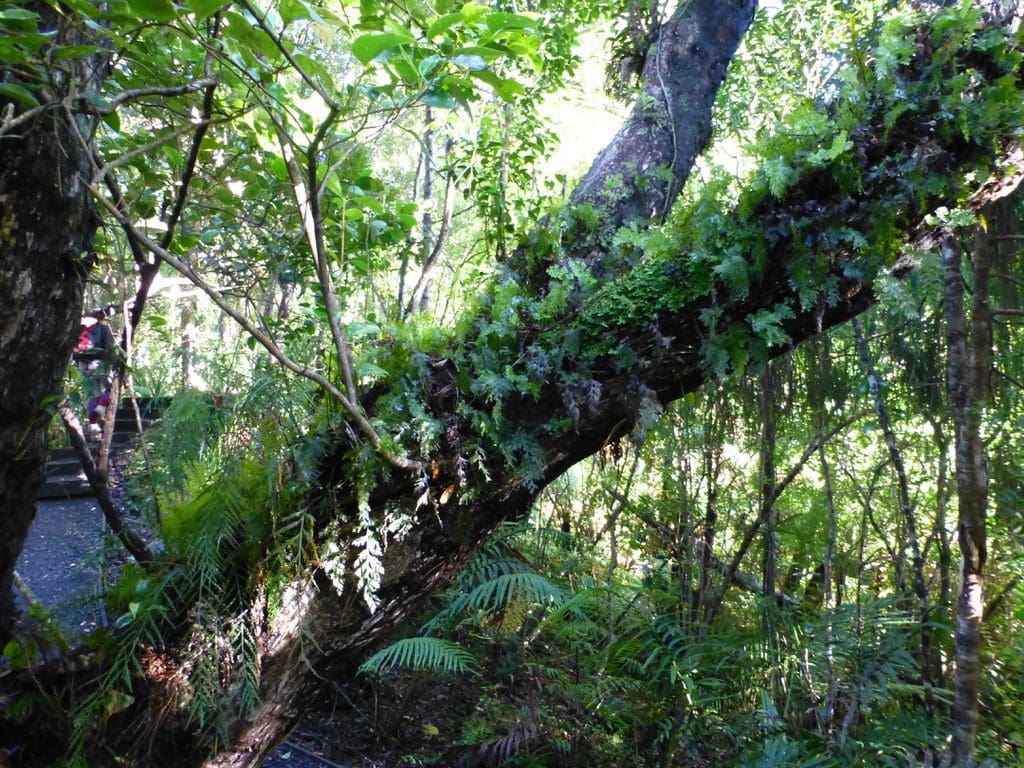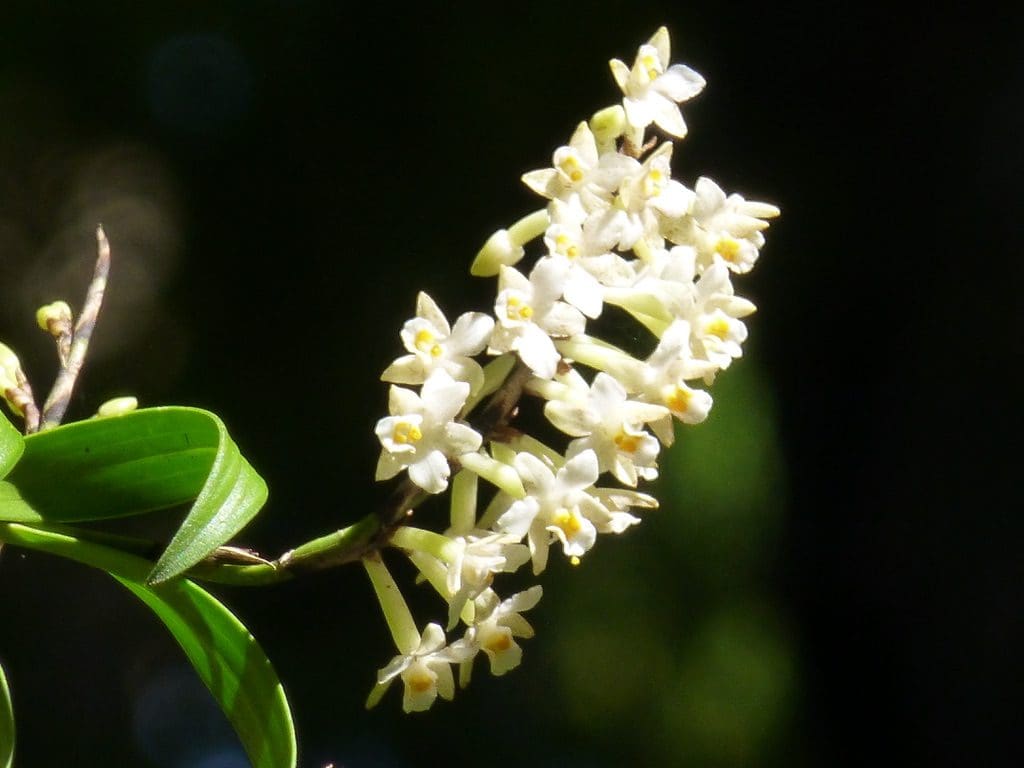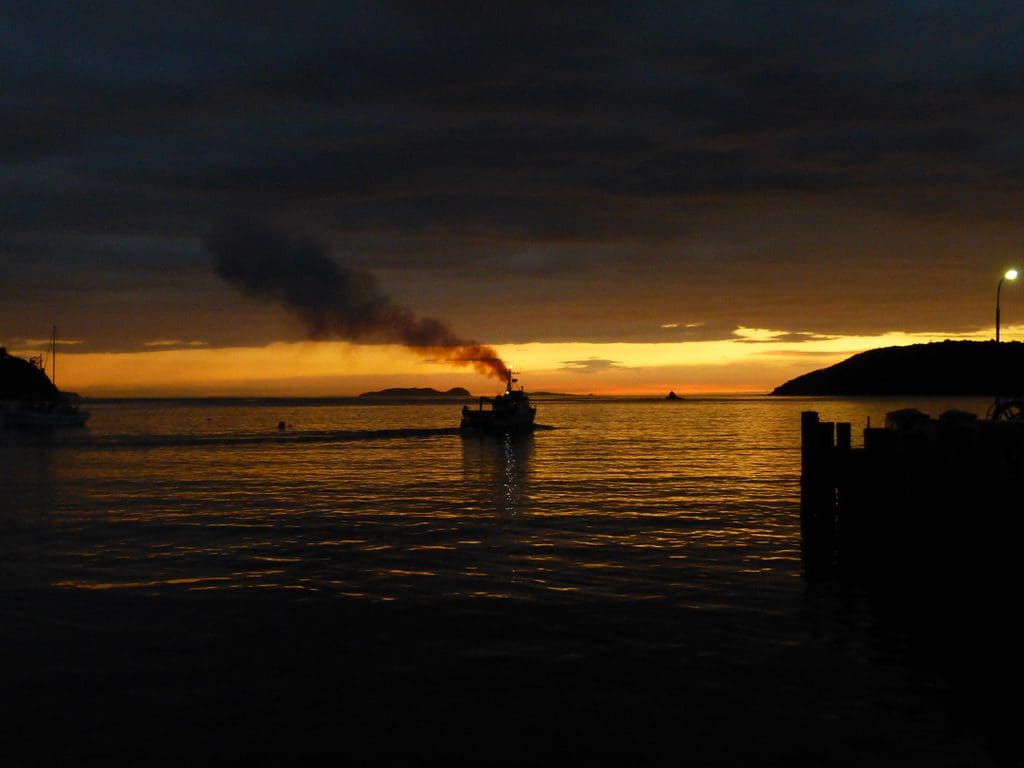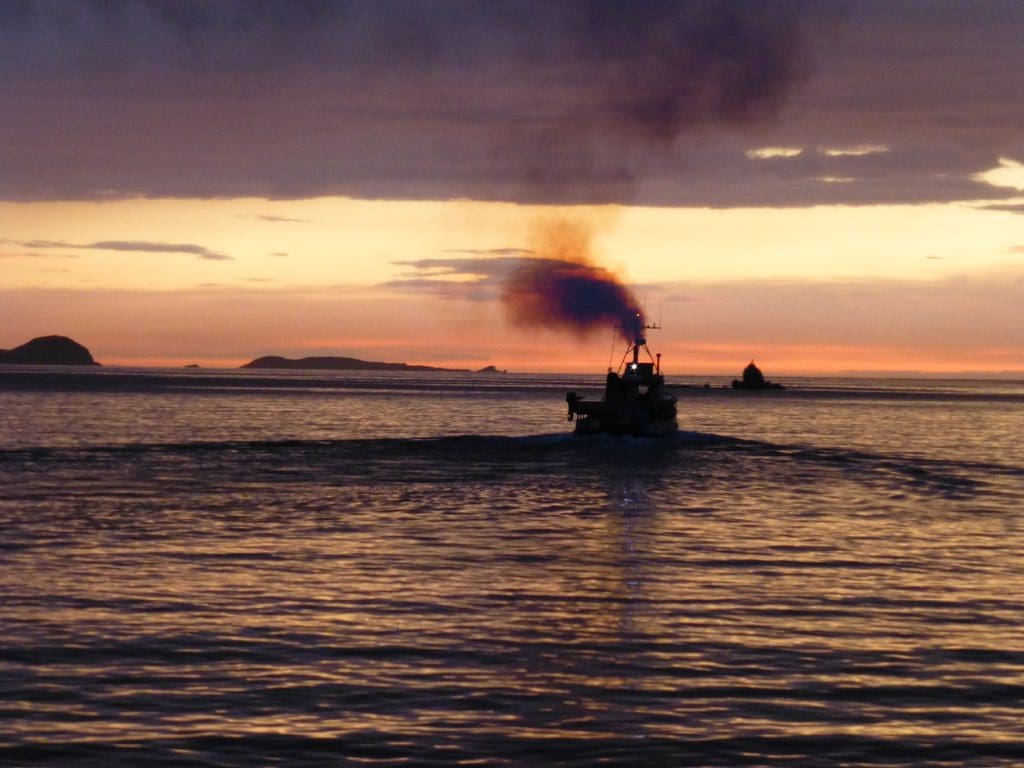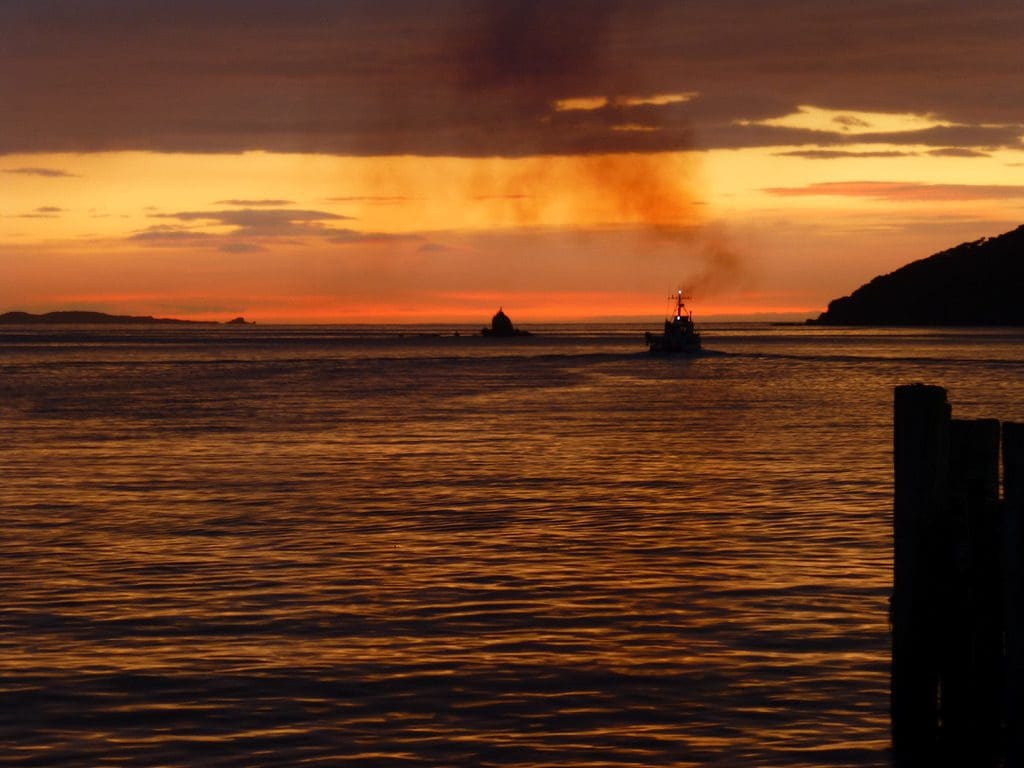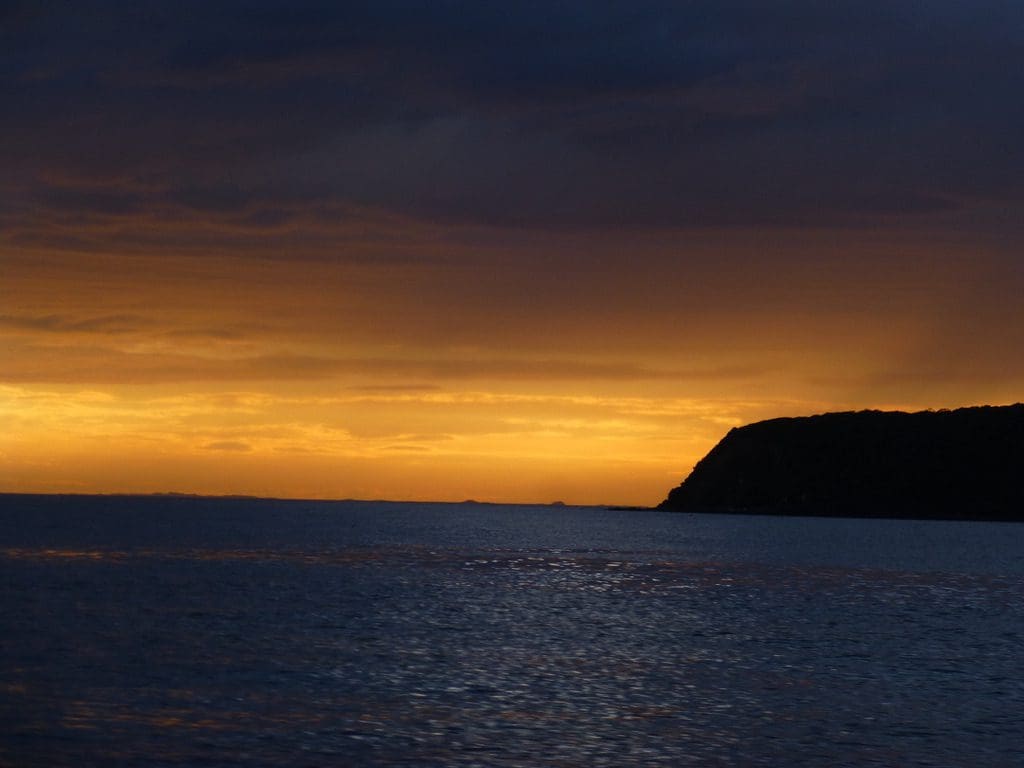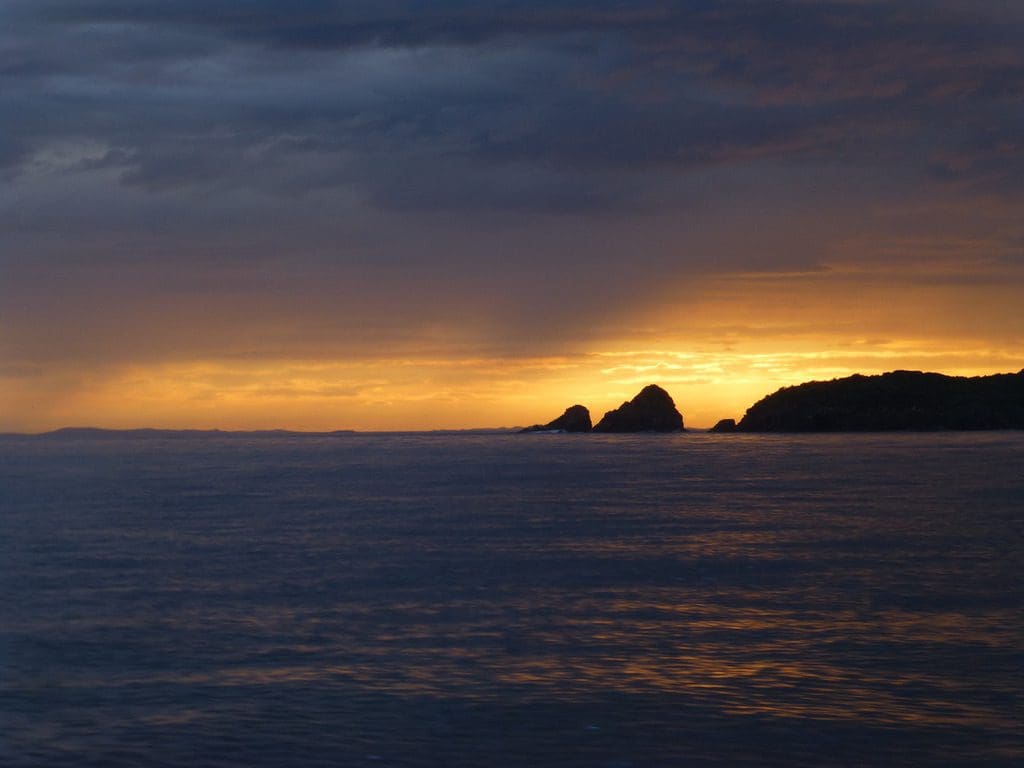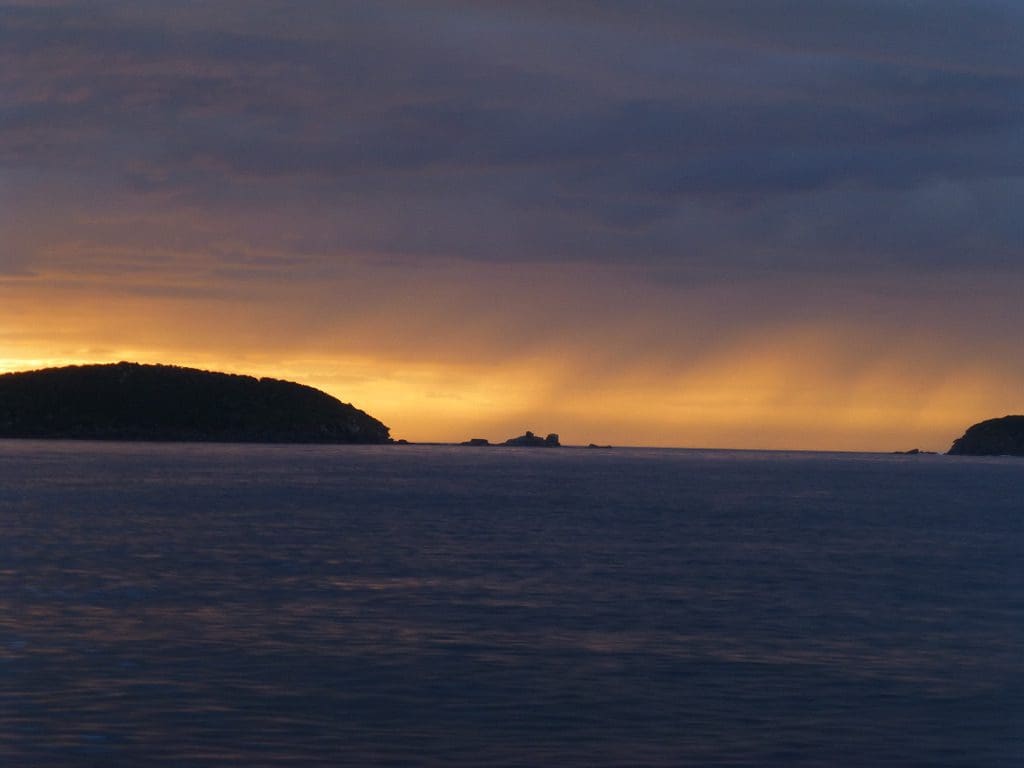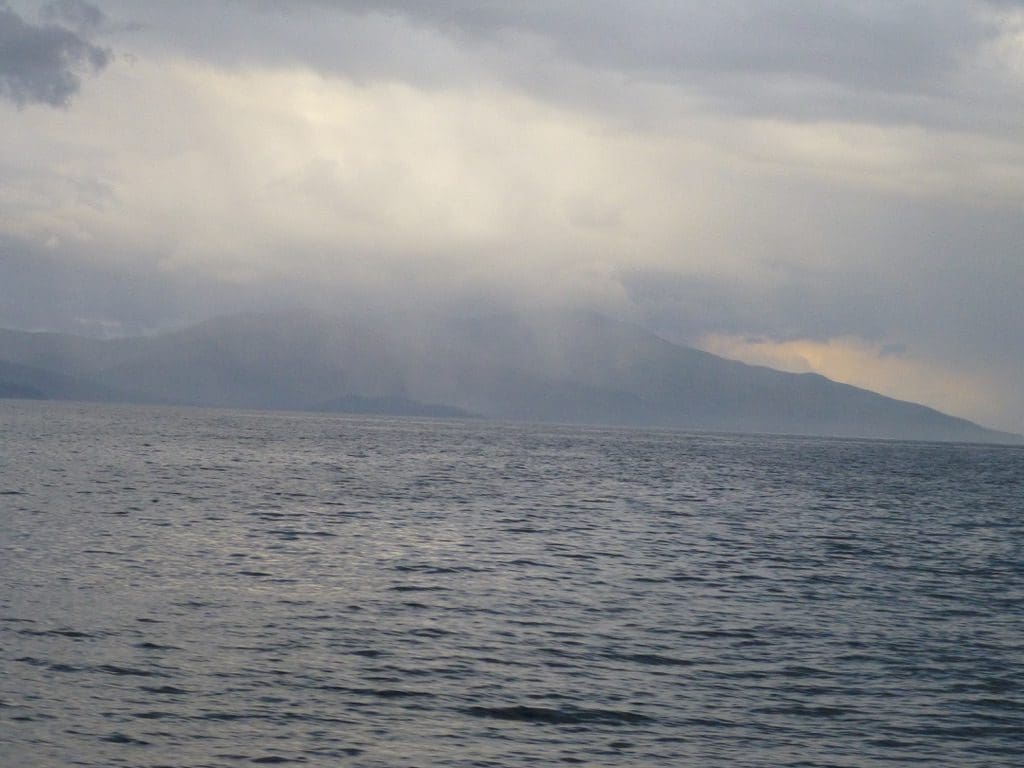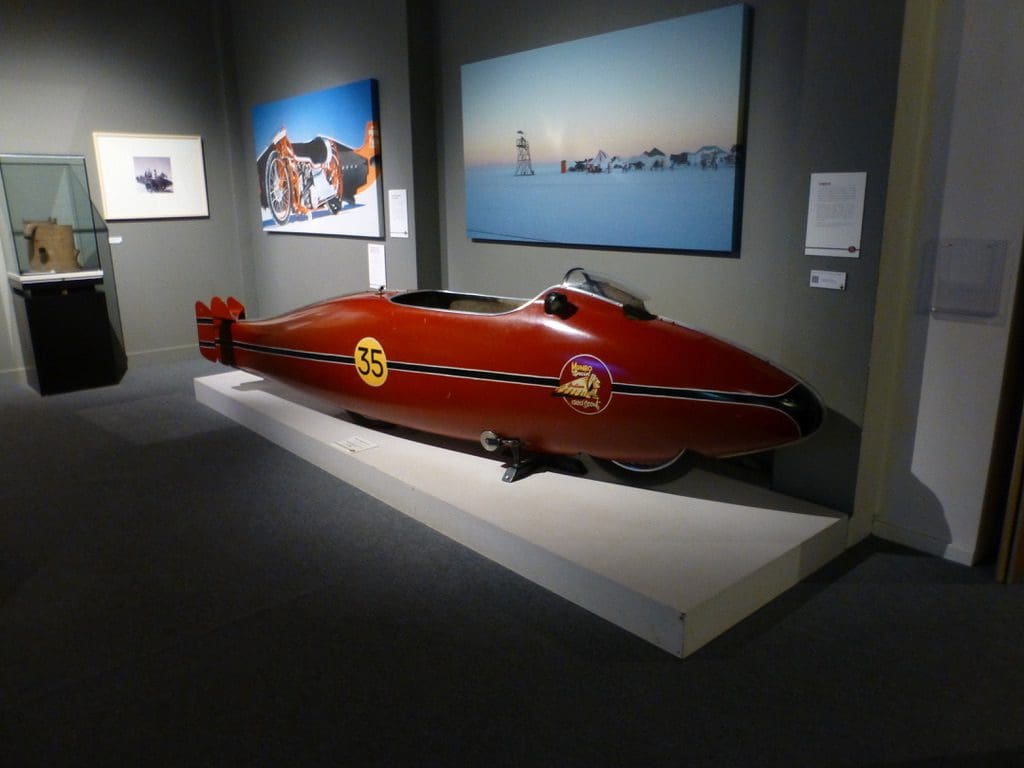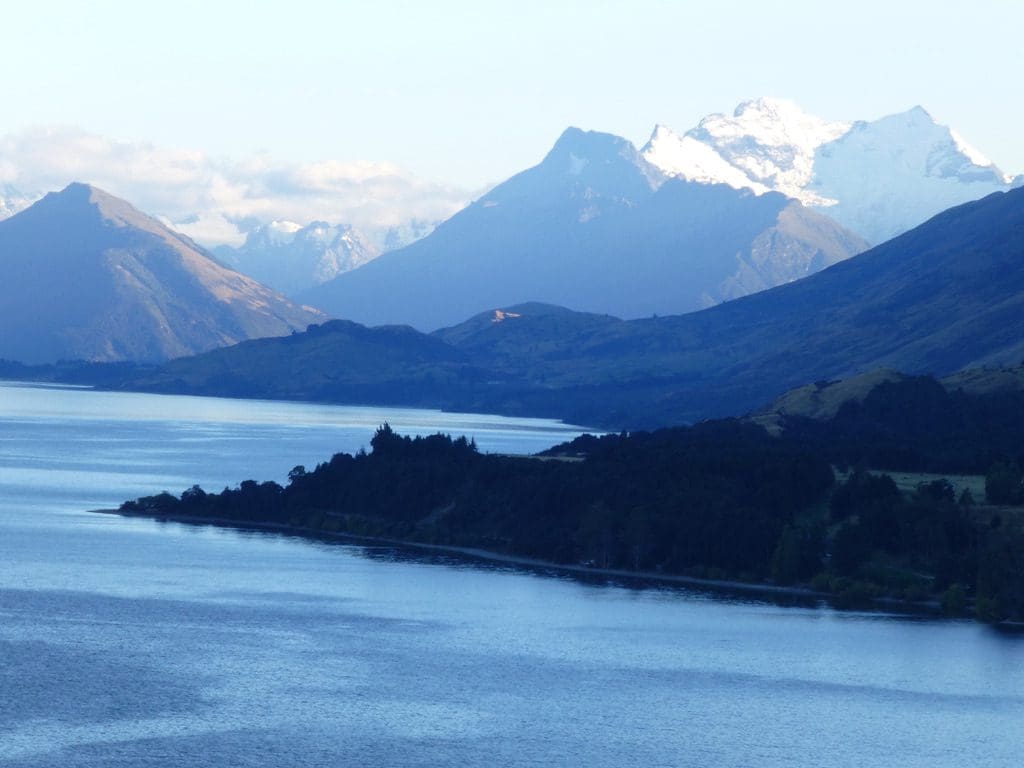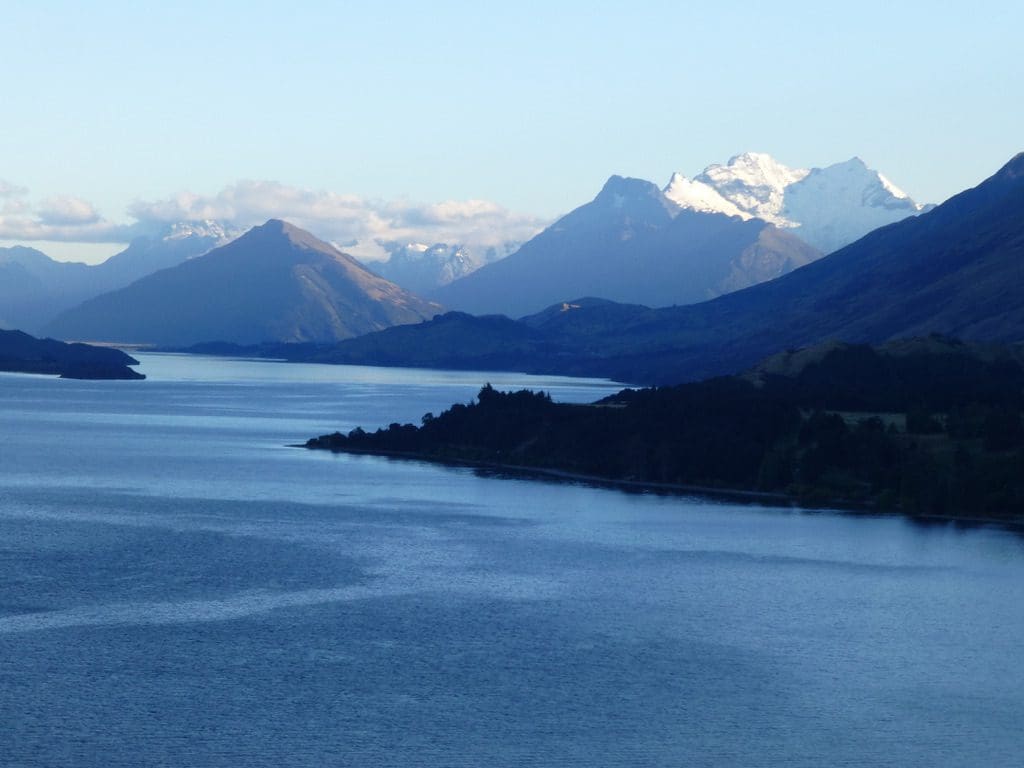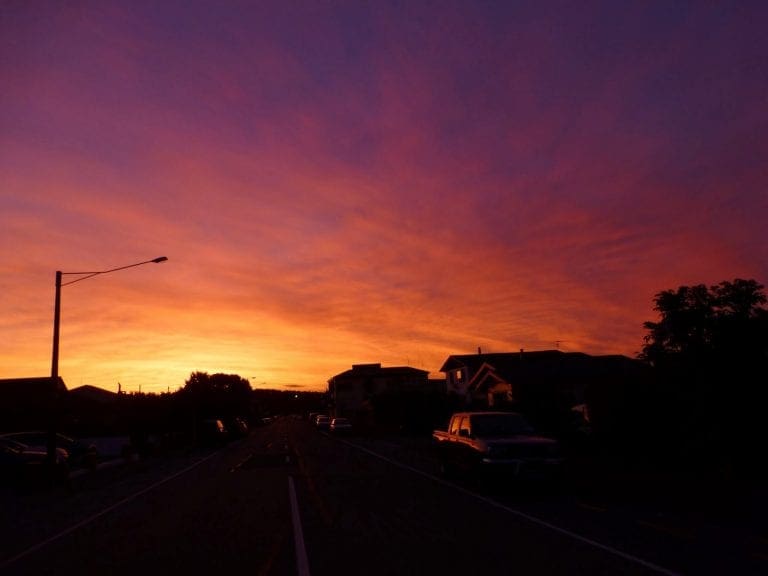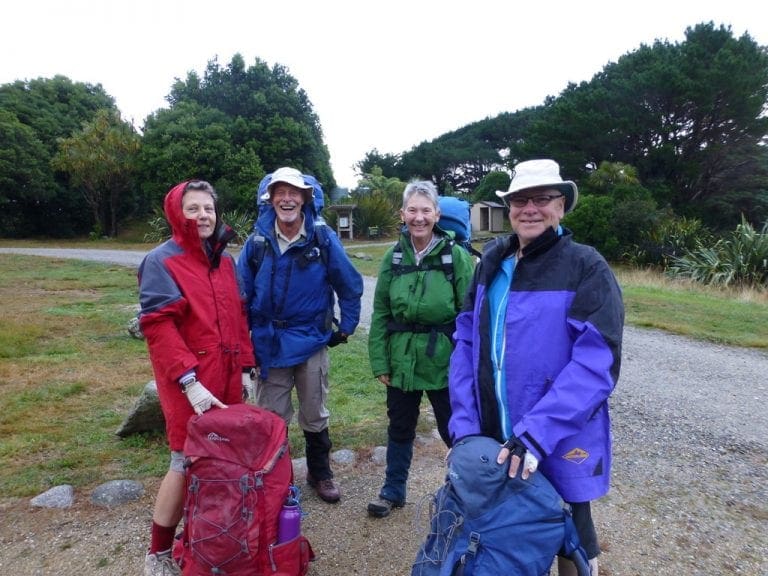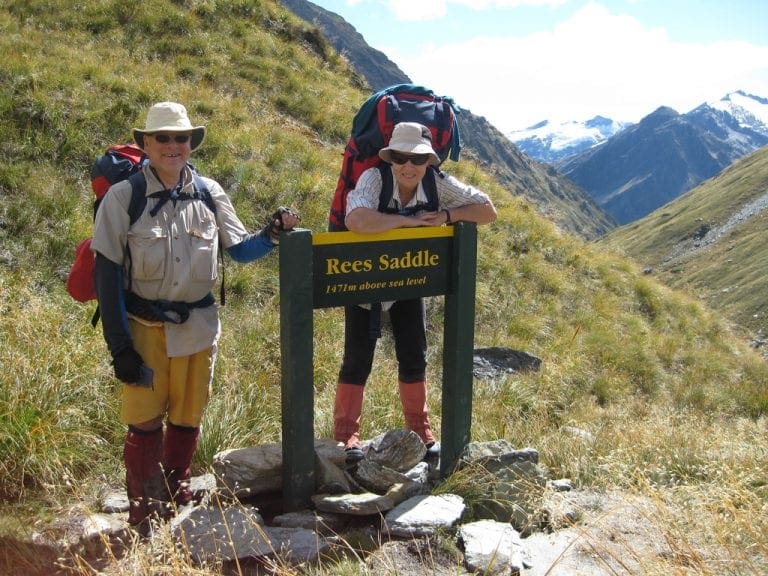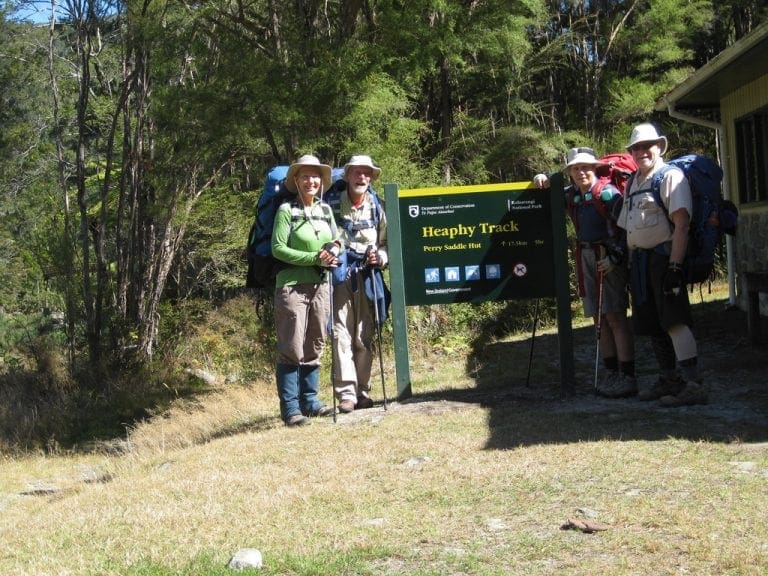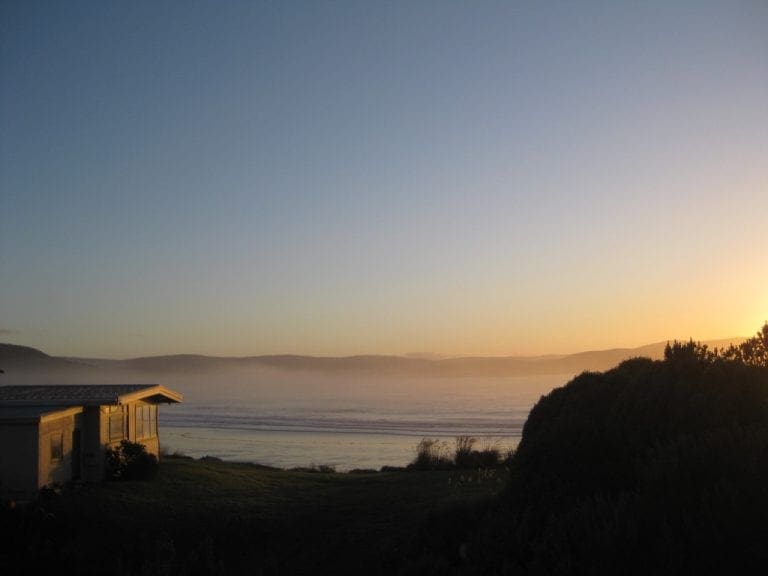New Zealand 2015 Stewart Island Rakiura Track
Sunday 1 Mar 2015. Day 12. Bus and Ferry to Stewart Island. Early start 5:50am with a bus pickup at 6:50am. First bus to Mossburn, then a bus to Invercargill, then a bus to Bluff & then the ferry. Ferry is a big cat passenger ferry that left at 11am (timed with our bus arrival that delivered 13 passengers). One hour doing a good speed to Oban on Halfmoon Bay, Stewart Is. On the way, several albatross (sitting & flying), amny shearwaters (flying), many penguins (fishing in groups) & one yellow eyed penguin (sitting high in the water). Today (1 Mar) was also the start of the oyster season. Many big oyster boats out. We stopped beside the ferry captain’s cousin’s boat & watched. In about 10m of water halfway to the Island. About 10 crew sorting oysters from bycatch that was thrown back. Oysters were trawled from the bottom. On the Island, we walked with our packs to the pub for a counter lunch & jug of beer. Then, we walked up the hill to our ‘Hilltop’ Hostel. It is excellent. Open airy with views on 2 sides. A big lounge kitchen area. Mainly young women – mainly French.
Monday 2 Mar 2015. Day 13. A bit rainy today. We went down to town via the track at the back of the hostel, then across a rugby field – possible glimpse of a kiwi. Checked email at the free wifi at the library. Then walked around the bay towards the lighthouse. A beautiful sheltered harbour. Six penguins (crested?) on a rock – black backs, white front, black stripe along side? wings? Heavy rain brought us back. Bought makings of lunch at the little supermarket. Walked back up the hill to the hostel. Much easier without a big backpack. Washed up for all after lunch. The pots needed a good scrub. The people here: two french women (Julie & Carol) both Wwoofers – Carol for the hostel & Julie at the smoked salmon factory. Both very good cabale women. Two French blokes (Thomas * 2). Two German girls. One American bloke. We think the hostel is mainly used to house the Wwoofers for the owner’s smoked salmon factory – his main business. The hostel is a useful sideline. When everyone had disappeared after lunch, Helen & I were getting ready to split up the food for the track. We measure everyday’s food into little plastic bags. we had just finished cleaning down the table and getting things laid out. I was measuring the measuring cup when one of the German girls plonked herself down in the chair I was using with all of my stuff spread all around her. She was not for moving. How to deal with that?
Wednesday 4 Mar 2015. Day 15. Walk to Port William Hut the first hut on the Rakiura Track. Early start & Carol drove us to the track start. Her first time driving the big 4 wheel drive. She saved us a 4km walk and so we had just 8 km to walk. A very up and down coastal walk through secondary forest most of the way – except for about 1 km walk along Maori Beach. One swing bridge – big. Many stairs up & down climbs. Certainly a huge amount of trackwok – gravel spread & plastic mesh over much of it. A very fine day. Blue sky with a touch of cirrus. (Oh oh!) Had lunch at the turnoff to North Arm Hut – we have to walk back up (2km) that climb to that turnoff to get out. Prettyish day. But by now I’ve walked through an awful lot of lowland regrowth forest with a lush fern understory. The Port William Hut is in a spectacular position at the head of its bay – green grass around. A few big old Angophoras. The water is cold. A pod of 4 dolphins fished the rips in the bay on the falling tide – one rip after another. Worthwhile to have carried in the binoculars. Hut full for the night. It has sleeping places for 24 people.
Thursday 5 Mar 2015. Day off doing not much. Cleaned the kitchen & sleeping rooms. Swept up mainly a fine mica carried in from the outside. Overcast today with a gusty wind from the north. The bay faces south. During the night, I got up 3 times to look for kiwi. I saw what I think might have been a kiwi on the grass at the front of the hut. They do not like light and move fast on the ground. Two+ possums live in the tree at the front of the hut. The hut has 2 bunk rooms, each with 12 beds – 4 in up & down bunk-beds; 4 in a lower sleeping platform with another sleeping platform above it. we did get 2 places on the lower sleeping platform yesterday. Today, we have moved to lower bunks. no dolphins today. Very full tide – full moon tonight. A pair of Paradise shelducks – female with a limp. Two Buffer’s Mollymawk (albatross) or Bounty Island Mollymawks came in following the fishing boat yesterday and today. A large party of fishers/divers at the campground here for a couple of weeks in shifts.
Friday 6 Mar 2015. Walk from Port William Hut to North Arm Hut. An early start. Alarm at 6:30am and away by 7:40am. A little rain just as were were leaving and occasionally on the way. About 13 km in total that is signposted as 6 hours. We did it in just over 5 hours (5:10). This is one of the least interesting tracks that we have walked. Vegetation is mostly all the same – regrowth forest with low ferns. Very up and down track. Up on hill then down that hill – repeat many times. Form Port william, we first had to walk back 1.9km (45mins) to the turnoff of our track. Much of the track is well maintained with a crushed gravel surface. Some muddy bogs. The tree roots are much worse than the mud – very treacherous. (All that gravel would have been carried by hand in buckets.) Highest point at 300m. The highlight was two steam log haulers in fairly good condition. These were part of an extensive network of wooden railway lines used to transport felled timber logs out. At one point, the walking track crosses a bridge that is over a cutting made for the railway. Last good water at the second green bridge which is at the base of the big climb up to 300m. We filled up. I managed my water intake quite well – drinking about 250-330 mls at each packoff. Lunch at a crest shelter behind a very large old tree. Another older couple had saved us a pair of bottom bunks. The hut fairly full with all the people from last night. In the bay below the hut, just a few oystercatchers and white faced herons. The hut itself is nested about 15 m above the waterline in a very tiny clearing. Toilets back up the hill on the track. The track drops very steeply down stairs to the hut from the turnoff that we will have to walk back to tomorrow. A bit of a heartstarter. Tonight our hut had: An American girl who had worked at McMurdo Base; A German girl who is doing her medical degree in Sweden; A Swiss/ Australian older couple; A Brisbane couple -Bushwalking Club- first trip overseas; Two German girls – orange fox sleeping suit.
Saturday 7 Mar 2015. Day 18. Day off. Raining hard at times. We lit the fire & stayed inside & read & brought in 4 loads of wet wood. Staying in the hut when a group moves on is often very odd. We had a very good group last night and it it is as though the bus we were all on and having a good time has moved on leaving us behind. Bye all, have a good life. We can just hope that the next group for the night (the next bus load) is as good. Tonight, we lucked out. Some very nice people (a group of 3 kiwi women who have escaped husbands & kids, an experienced woman walker who had done the NW circuit, a Danish woman who is doing her PhD); and then the rest – 2 young kiwis who had brought mum for a walk (mum slept all afternoon). The two young kiwis built up the fire & ended up burning all the 4 loads of wood we had brought in. When we were going to bed, the stove was so hot that I could not open it without fire tongs. All the remaining firewood was piled up around the fire and – worst of all – all the windows shut. I went right off. They could have killed us all – burnt the hut down, asphyxiated us with Carbon Monoxide. Just as well I checked.
Sunday 8 Mar 2015, Day 19. We walked out. Sign posted as 5 hours – we tok 4:05 to the turn off to the hostel. Pretty good for a pair of old buggers. I have to say that the Rakiura Track is just boring. Same old regrowth lowland forest. Up and down, Up and down. A bit of mud – dry mud mainly in that I did not sink in too far. But, all the same old same old. Put this one in the list of our least favourite walks. That entire peninsular that we walked around & across was very heavily logged with two big sawmills & a network of train lines to get logs to the sawmills. Back to the Hilltop Hostel, a shower & down the hill for food. The highlight of the day was the 6:30 Quiz at the Pub. Pub full, much food and drink sold. The Quiz began right on 6:30 pm run by a tough lovely lady who does like to say ‘fuck’ a lot. Excellent entertainment. Teams with a max of 6. We were in a team of 5 and scored 19½ points coming in the middle of the field. The winners (who were the same people who tried to kill a hut full of people last night) got 28½ points. (Smart at quiz, lacking in practical common sense). A good nights entertainment and a very good earner for the pub & local community.
Monday 9 Mar 2015. Dau 20. Down to the library to check & reply to emails. Then to the ‘movie theatre’ to see ‘A locals Tale’ which is an excellent 40min DVD of life on and history of Stewart Island. Blue cod attacking octopus & scallop shell escaping octopus. Ended with the local fire truck doing a 3+ point turn – ‘turn the ficking siren off’ – ‘What’ – ‘turn the fucking siren off’. ‘Right hand down’. ‘Your right hand, dickhead’. Warning yesterday at the supermarket of a German backpacker (‘tall, dark, good looking’) who had stolen groceries from the supermarket and other things from around the village. The local cop has driven him to the start of the Rakiura Track to get rid of him. Not a good turn for the people on the track. All those trusting unguarded packs for this bloke to steal from – food, money. It would have been better to put him on the ferry to get the trouble off the island. Tonight, a very animated older Israeli who is just about to retire from the army. He wants to do everything & needs every move and minute of the day mapped out. Much detail. Began feeding the cat today. It did belong to a neighbour who has left or is no longer feeding it. To feed itself, it is eating a few birds a day. Either feed it or kill it – or it will kill all the birds.
Tuesday 10 Mar 2015. Day 21. Rain. We walked around past the Bathing Beach to Bragg’s Bay headland (very good little cemetery) and back. Supermarket is without meat & most supplies. Even less than yesterday. We had a coffee & savory crepe at the Little French kitchen.
Wednesday 11 Mar 2015. Day 22. We caught the 9am ferry to Ulva Island and the noon ferry back. (Actually, because of the number of people wanting the ferry – which holds only 7 – he left early both times to get in 2 trips.) Ulva Island is special and well worth the trip. A very varied forest with many plants in the understory & canopy. Much more varied than the boring remnants that are all that is left of the Rakiura Track. Many more birds. the highlight was a group of 5+ saddlebacks (that behave like crested shrike-tits – ripping the bark and foliage to bits) and 5+ yellow heads (mohua) and we heard a kiwi call close by. A very pleasant well maintained track. $20 return by Ulva Island Ferry. Back at Halfmoon Bay, we had chowder and cod pieces.

Thursday 12 Mar 2015. Day 23. Very quiet day. Visit to Rakiura Museum – surprisingly good. How to get wool from the sheep to little boat to bigger boat to off the island. Gary, owner of hostel & Stewart Island Smoked Salmon.
Friday 13 Mar 2015 Day 24. Early start. 7am drive down the hill to deliver car to Gary. 8am ferry. Foreaux Express. 5 species of albatross on the crossing. Light beautiful on the water. Shearwaters cruising just above the water.
